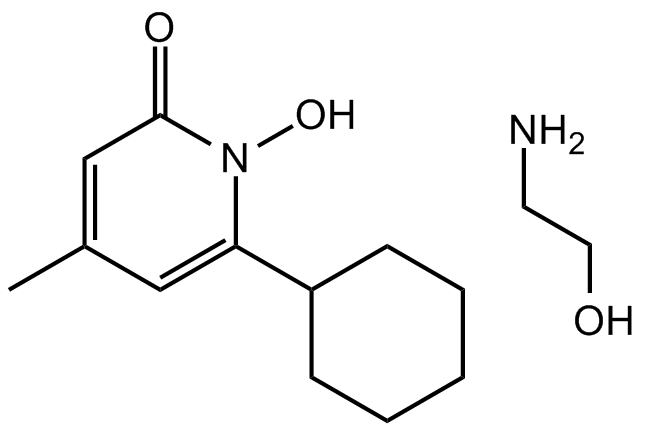Microbiology & Virology
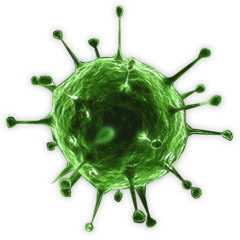
Microbiology & Virology
A virus is a small infectious agent that replicates inside living cells. Viruses cause many human diseases from small illnesses, like influenza, to more deadly diseases, like hepatitis B and HIV. Our body’s immune system defends against viral infection by generating specific antibodies to bind to and neutralize viral particles and by cell mediated immunity that destroys infected host cells.
Ziele für Microbiology & Virology
- Antibiotic(497)
- Bacterial lipoprotein targeting chaperone(0)
- CCR5(2)
- CMV(22)
- gp120/CD4(4)
- HBV(72)
- HCV(134)
- HIV(403)
- HSV(83)
- Influenza virus(124)
- NA(7)
- Reverse Transcriptase(61)
- RSV(35)
- SRPK(5)
- SARS-CoV(126)
- Antifungal(34)
- Orthopoxvirus(2)
- Antimalaria(6)
- Beta-Lactamase(0)
- VEEV(1)
- Arenavirus(9)
- Bacterial(1239)
- Enterovirus(21)
- Filovirus(5)
- Fungal(319)
- Parasite(363)
- Virus Protease(62)
- Chicken Pox & Shingles(0)
- Chikungunya(0)
- Coronaviruses(9)
- Dengue(2)
- DNA & RNA Polymerase Inhibitors(4)
- Ebola(0)
- Entry/Fusion Inhibitors(6)
- Epstein-Barr(0)
- Integrase Inhibitors(2)
- MERS(6)
- Others(0)
- Rhinoviruses(1)
- West Nile Virus(0)
- Yellow Fever(1)
- Zika(0)
- COVID-19(16)
- Antiviral(2)
Produkte für Microbiology & Virology
- Bestell-Nr. Artikelname Informationen
-
GC33961
Cefpiramide sodium (SM-1652)
Cefpiramid-Natrium (SM-1652) (SM-1652; Wy-44635) ist ein neues Pseudomonas-aktives Cephalosporin mit einem breiten Spektrum an antibakterieller AktivitÄt.
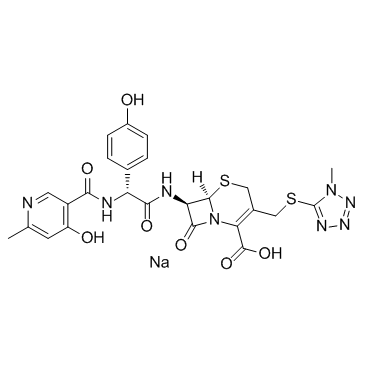
-
GC32154
Cefpirome sulfate (HR-810 sulfate)
Cefpiromsulfat (HR-810-Sulfat) (HR-810-Sulfat) ist ein Cephalosporin-Antibiotikum der vierten Generation.
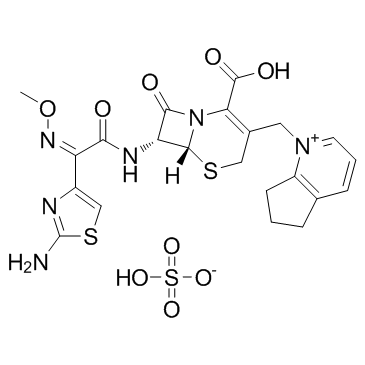
-
GC10817
Cefpodoxime (free acid)
R 3763
Cefpodoxim (freie SÄure) (Cefpodoxim (freie SÄure) SÄure) ist ein starkes Antibiotikum, das gegen grampositive und gramnegative Bakterien wirkt.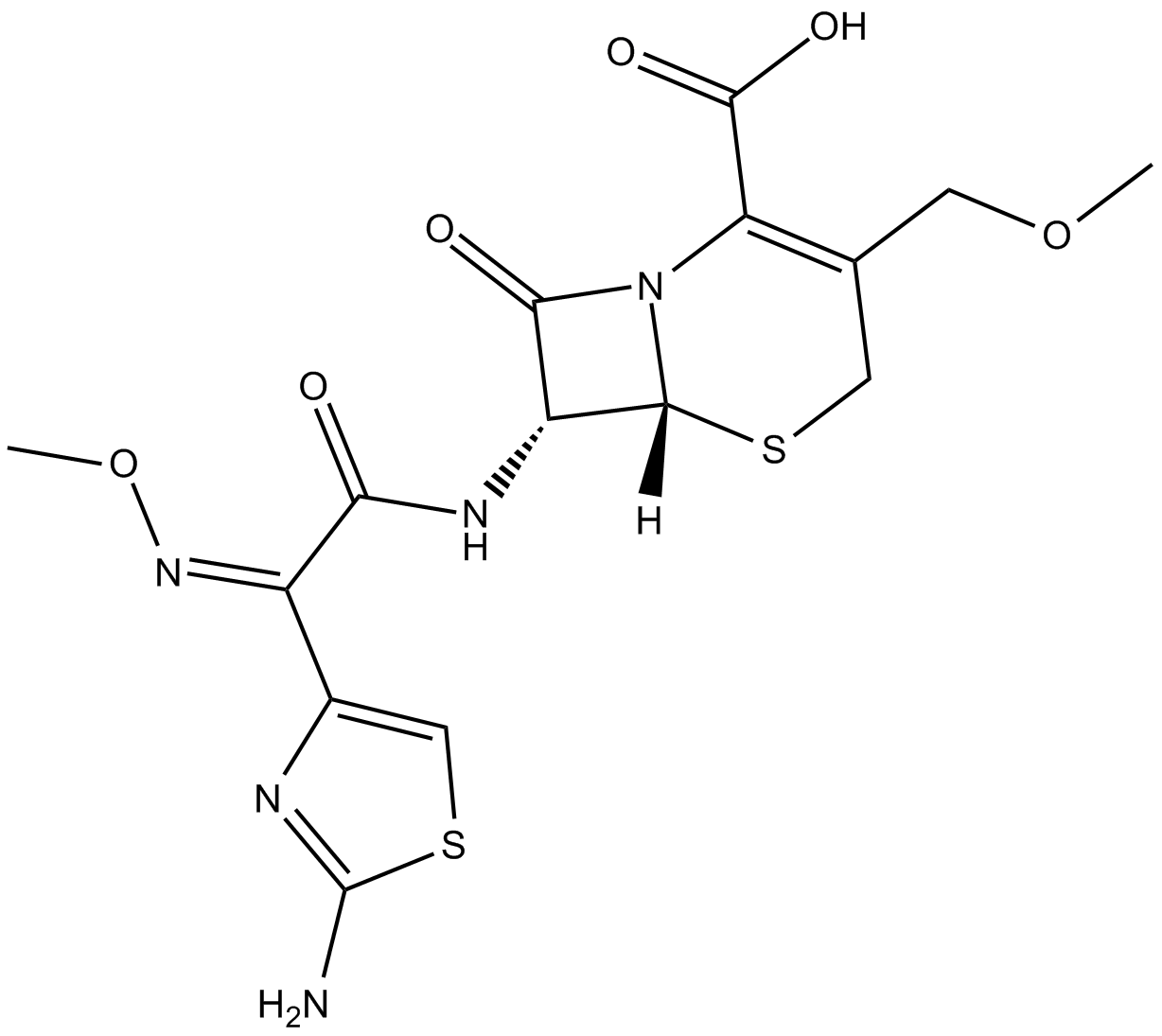
-
GC11777
Cefpodoxime Proxetil
Cefpodoxime Proxetil ist ein erstes orales Breitbandantibiotikum, das zur dritten Generation von Cephalosporinen gehÖrt.
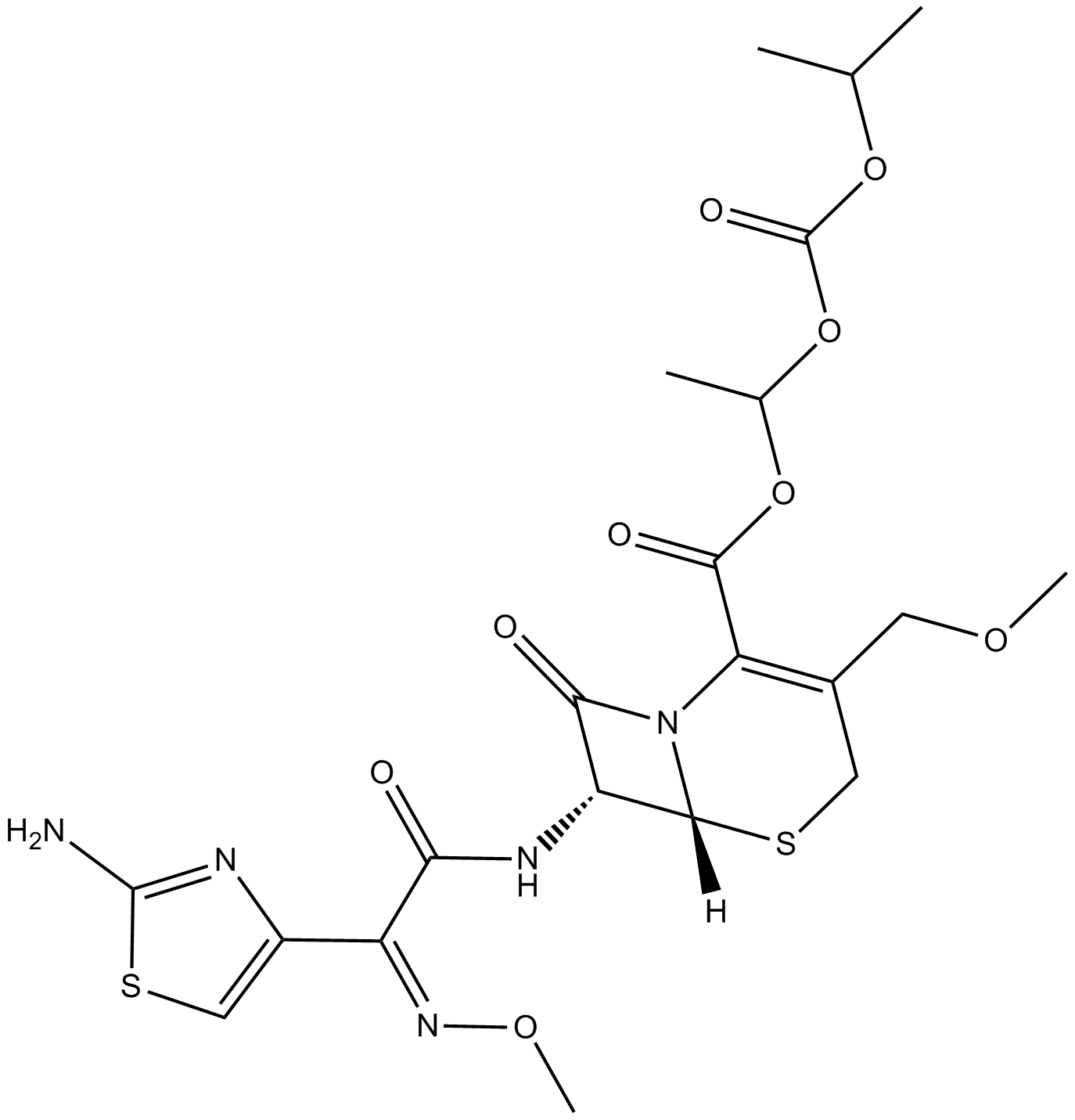
-
GC16155
Cefprozil
BMY-28100
Cefprozil (Cefzil) ist ein Antibiotikum der zweiten Generation vom Cephalosporin-Typ.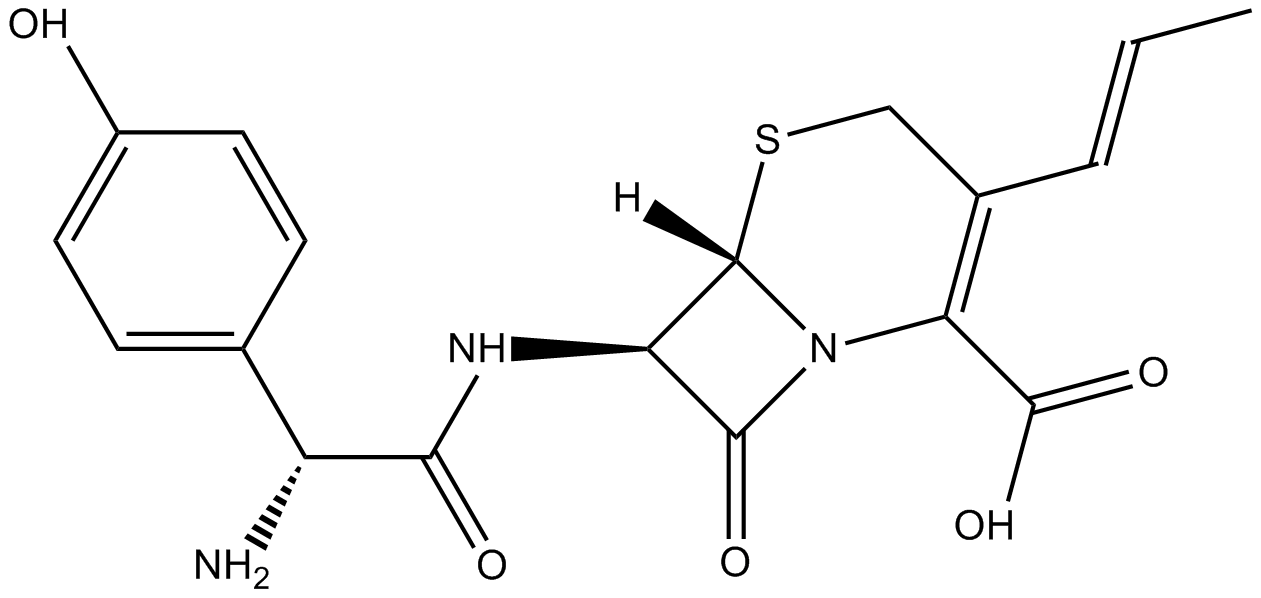
-
GC13258
Cefprozil hydrate
Cefprozilhydrat (Cefzil) ist ein Antibiotikum der zweiten Generation vom Cephalosporin-Typ.
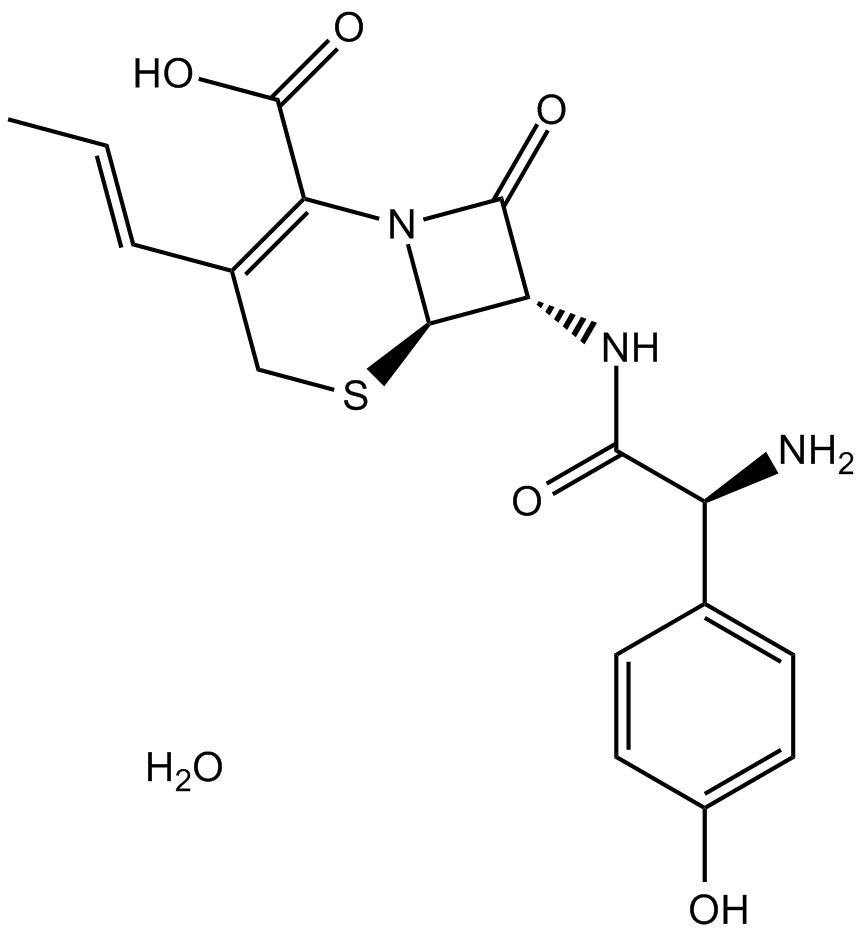
-
GC14460
Cefprozil monohydrate
Second-cephalosporin type antibiotic
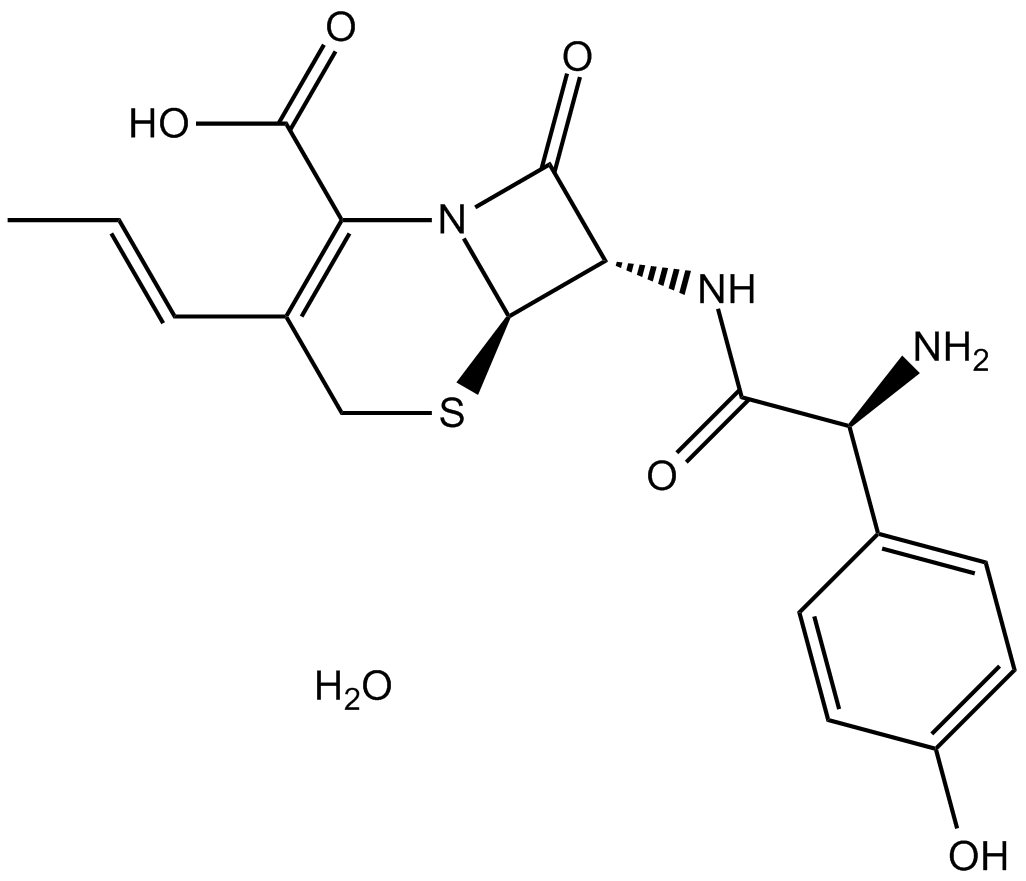
-
GC60105
Cefquinome sulfate
HR 111V sulfate
Cefquinomsulfat ist ein Cephem-Antibiotikum, das Mitglieder der Enterobacteriaceae hemmt.
-
GC32181
Cefradine (Cephradine)
SQ 11,436
Cefradine (Cephradine) (Cefradine) ist ein Breitspektrum- und oral aktives Cephalosporin.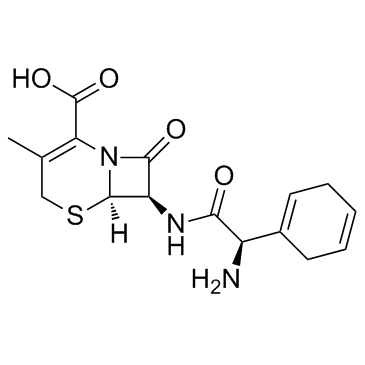
-
GC48443
Cefsulodin (sodium salt hydrate)
A βlactam antibiotic
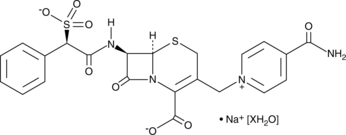
-
GC11451
Cefsulodin (sodium salt)
β-lactam antibiotic
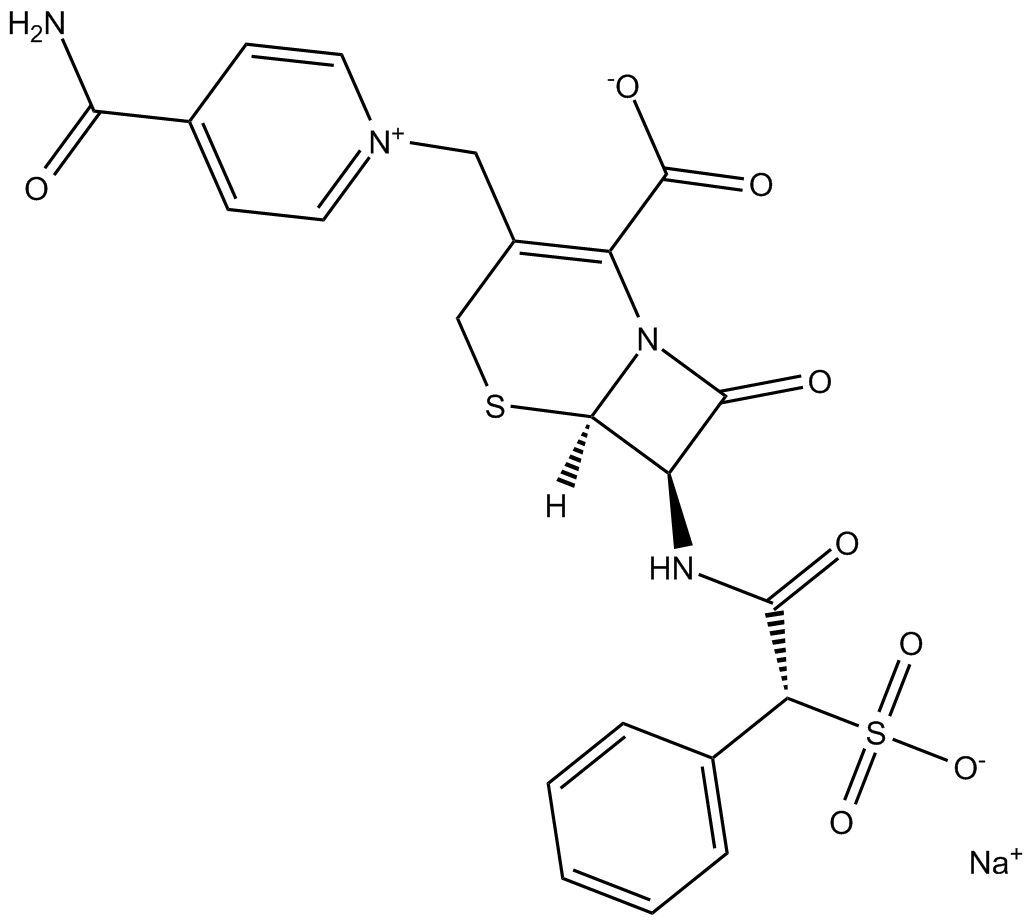
-
GC14095
Cefsulodin Sodium
Cefsulodin (SCE-129)-Natrium ist ein β-Lactam-Antibiotikum der dritten Generation und Mitglied der Cephem-Untergruppe von Antibiotika.
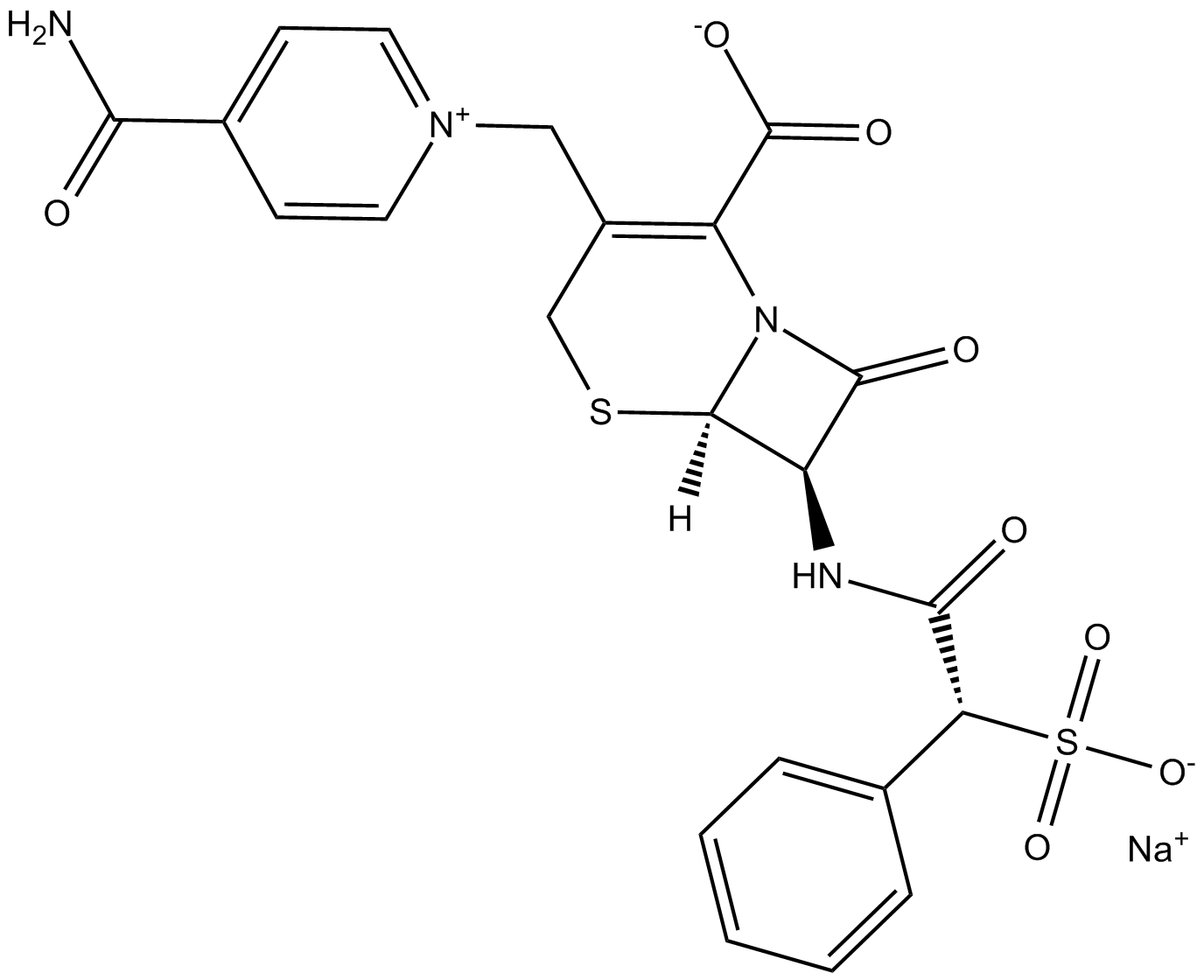
-
GC35646
Ceftaroline fosamil
Ceftarolinfosamil (TAK-599), ein Cephalosporin-Derivat, ist ein N-Phosphono-Prodrug des anti-Methicillin-resistenten Staphylococcus aureus (MRSA) T-91825.
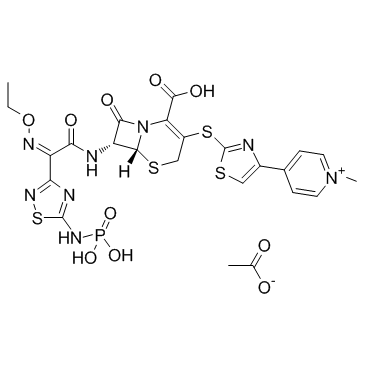
-
GC13587
Ceftazidime
GR20263
Dritte-Generation-Cephalosporin
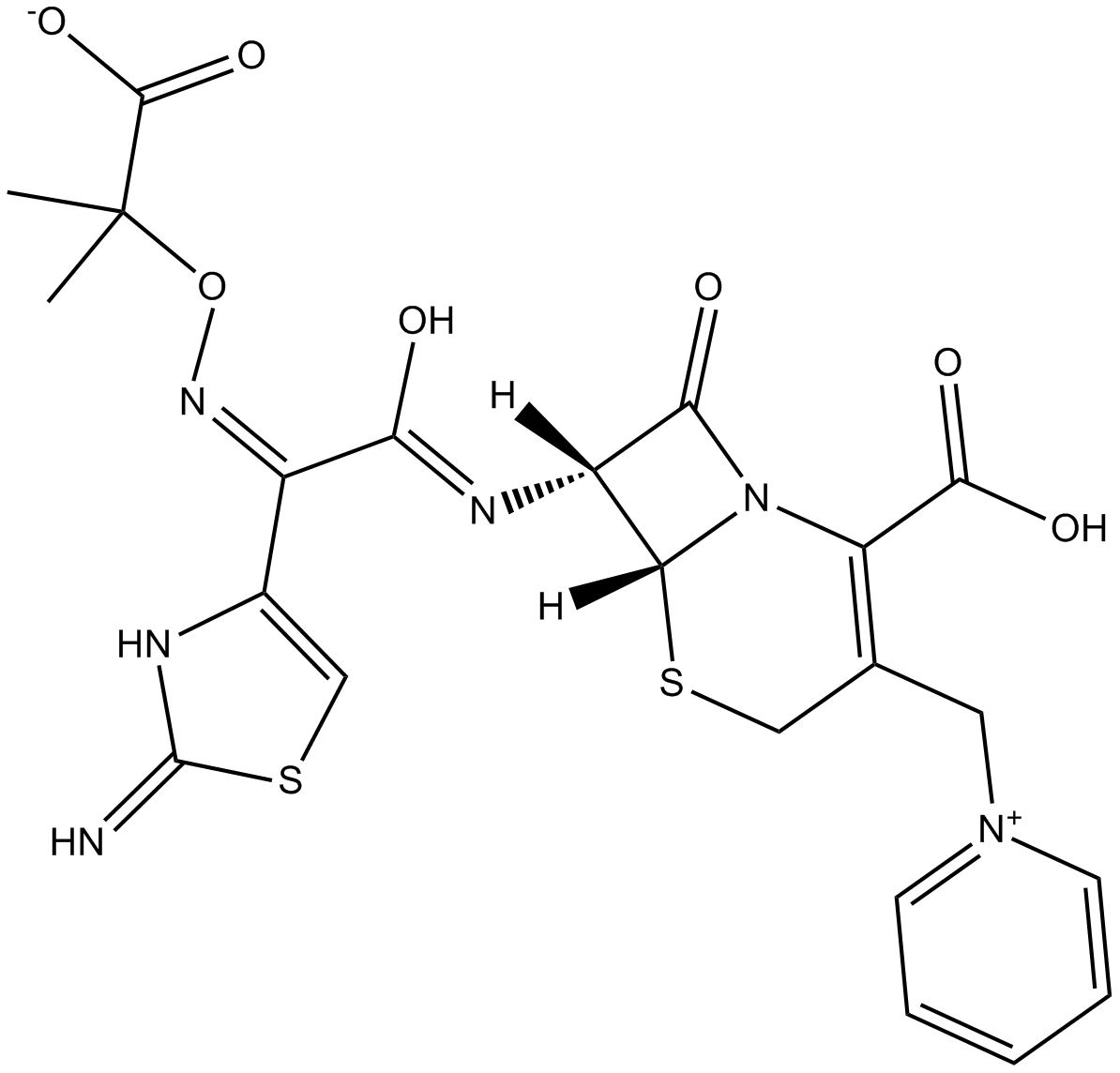
-
GC43224
Ceftazidime (hydrate)
Ceftazidim (GR20263) Pentahydrat, ein Antibiotikum, hat ein breites Wirkungsspektrum gegen grampositive und gramnegative aerobe Bakterien.
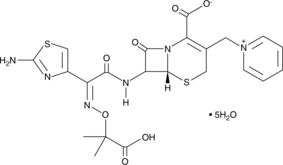
-
GC25209
Cefteram pivoxil
Cefteram Pivoxil is the pivalate ester prodrug of cefteram, a semi-synthetic, broad-spectrum, third-generation cephalosporin with antibacterial activity.
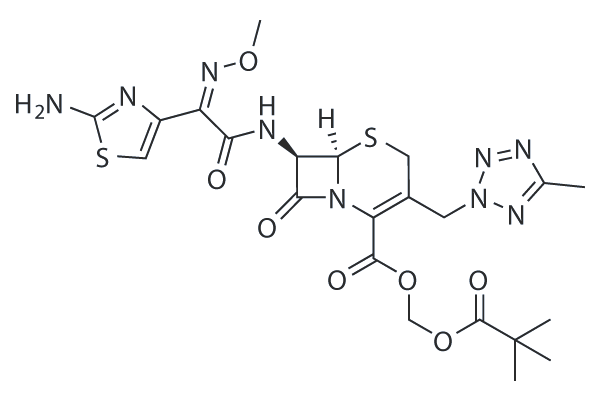
-
GC25210
Ceftezole
Celoslin, Falomesin
Ceftezole (Celoslin, Falomesin) is a semi-synthetic first-generation cephalosporin with antibacterial activity.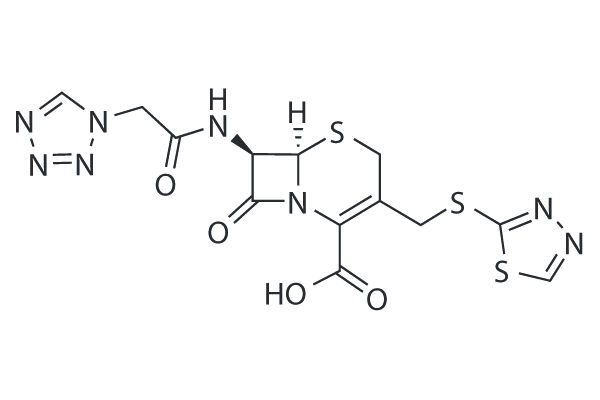
-
GC39580
Ceftezole sodium
Ceftezol-Natrium (CTZ-Natrium) ist ein Breitspektrum-Cephem-Antibiotikum gegen viele Arten von grampositiven und gramnegativen Bakterien.

-
GC15695
Ceftibuten
Ceftibuten (Sch39720), ein Antibiotikum, ist ein oral aktives Cephalosporin, das in vitro eine starke AktivitÄt gegen ein breites Spektrum gramnegativer und bestimmter grampositiver Pathogene besitzt.
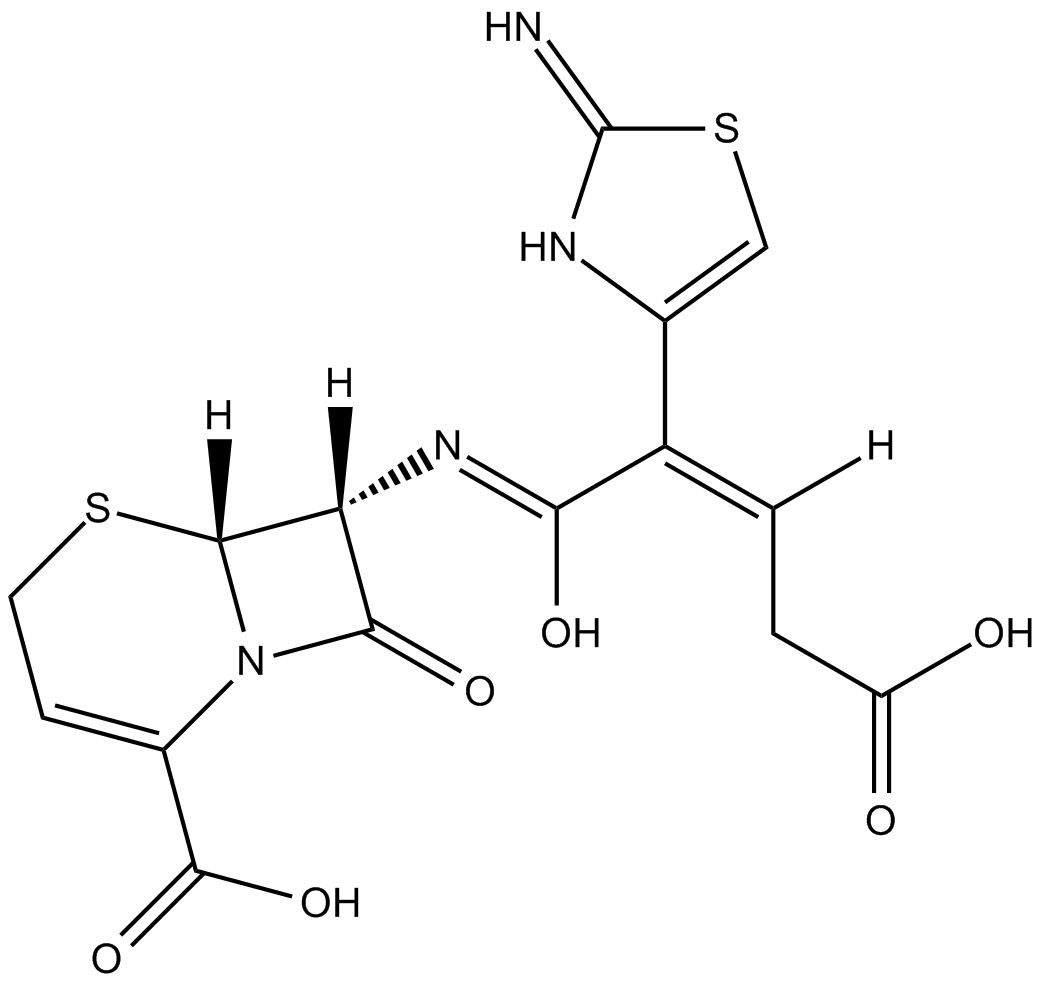
-
GC35647
Ceftibuten dihydrate
SCH 39720
Ceftibuten (Sch-39720)-Dihydrat, ein Antibiotikum, ist ein oral aktives Cephalosporin und besitzt in vitro eine starke AktivitÄt gegen ein breites Spektrum gramnegativer und bestimmter grampositiver Pathogene.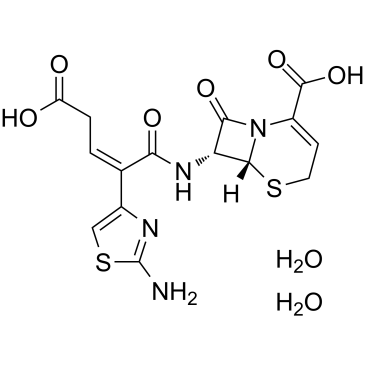
-
GC11235
Ceftiofur HCl
U-64279A, U-67279A
Ceftiofur HCl ist ein halbsynthetisches Antibiotikum mit AktivitÄt gegen verschiedene grampositive und gramnegative, aerobe und anaerobe Bakterien, die bei Haustieren vorkommen.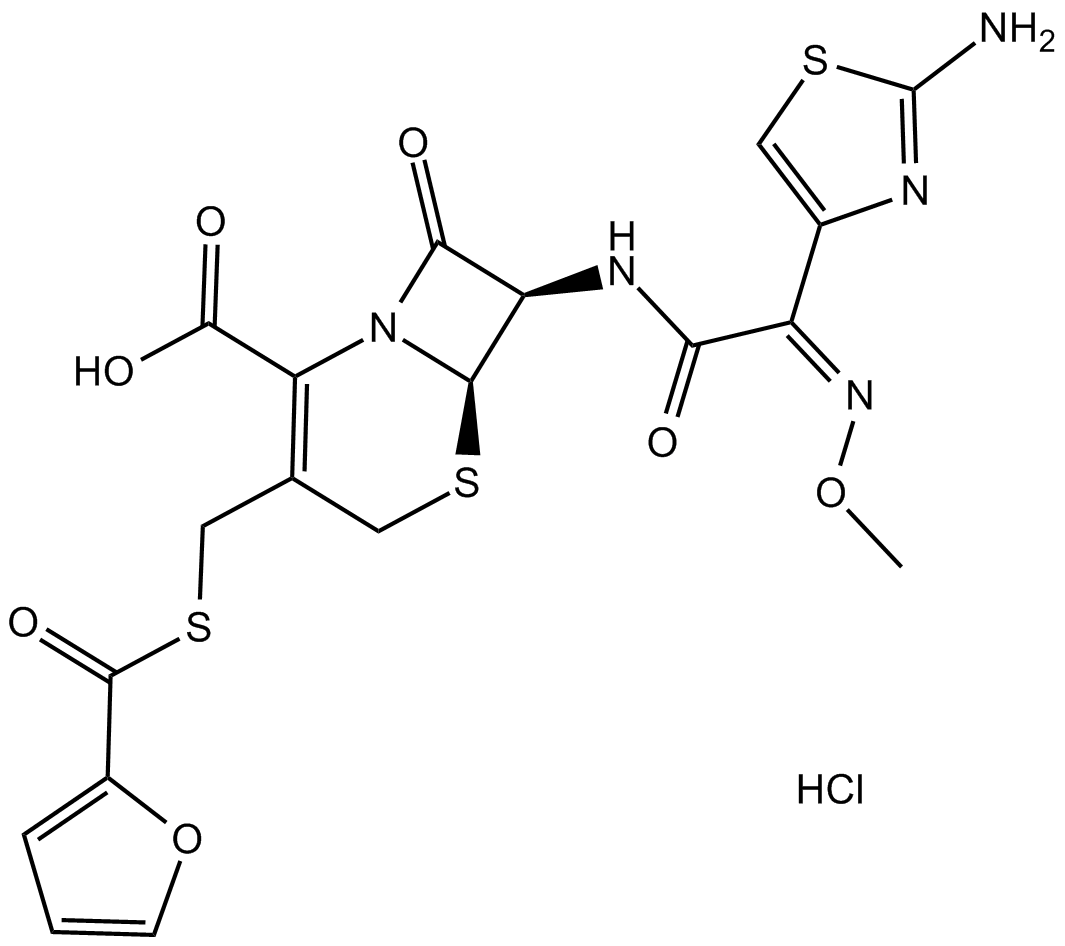
-
GC32159
Ceftiofur sodium (sodium ceftiofur)
Ceftiofur-Natrium (Natriumceftiofur) ist ein in der VeterinÄrmedizin zugelassenes Antibiotikum vom Cephalosporin-Typ (dritte Generation).
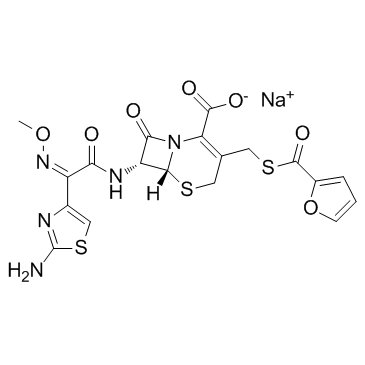
-
GC32229
Ceftizoxime
Ceftizoxim ist ein bakterieller Inhibitor, der die bakterielle Zellwandsynthese stÖrt und die Quervernetzung des Peptidoglykans hemmt.
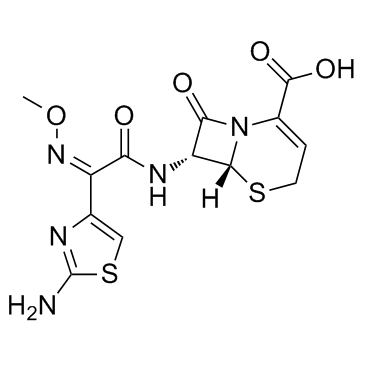
-
GC32180
Ceftizoxime sodium (SKF-88373)
FR 13479
Ceftizoxim-Natrium (SKF-88373) (SKF-88373) ist ein Cephalosporin der dritten Generation, das gegen gramnegative und grampositive Bakterien wirksam ist.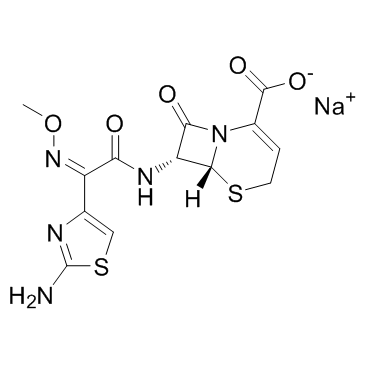
-
GC32128
Ceftobiprole (Ro 63-9141)
Ceftobiprol (Ro 63-9141) (Ro 63-9141) ist ein Breitband-Cephalosporin mit hoher In-vitro-AktivitÄt gegen Methicillin- (MRSA) und Vancomycin-resistente Staphylokokken (VRSA) und Penicillin-resistente Streptokokken mit einem MHK90-Wert von 2 μg/ml fÜr MRSA.
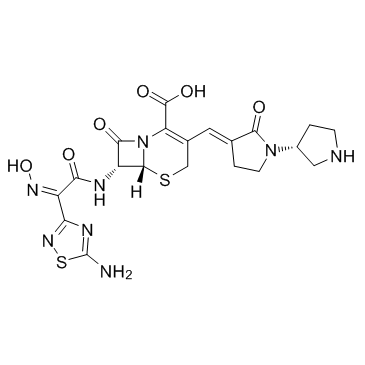
-
GC68005
Ceftobiprole medocaril sodium

-
GC35648
Ceftriaxone
Ceftriaxon ist ein Cephalosporin-Antibiotikum der dritten Generation mit ausgezeichneter AktivitÄt gegen viele gramnegative und angemessener AktivitÄt gegen die meisten grampositiven Mikroorganismen.
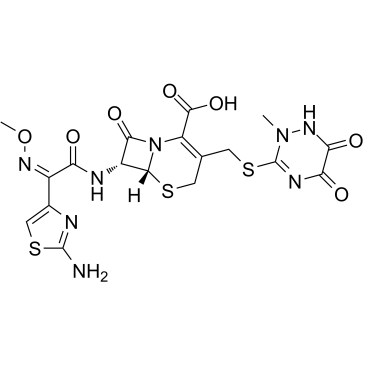
-
GC32075
Ceftriaxone sodium salt (Disodium ceftriaxone)
Ceftriaxon-Natriumsalz (Dinatrium-Ceftriaxon) (Dinatrium-Ceftriaxon) ist ein Cephalosporin-Antibiotikum der dritten Generation mit ausgezeichneter AktivitÄt gegen viele gramnegative und angemessene AktivitÄt gegen die meisten grampositiven Mikroorganismen.
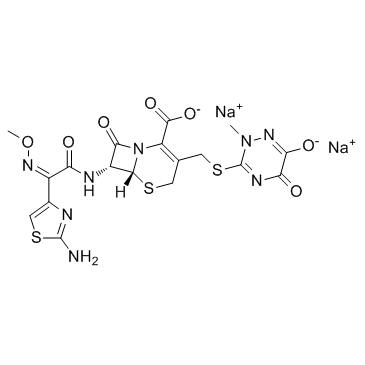
-
GC11349
Ceftriaxone Sodium Trihydrate
Ceftriaxone disodium hemiheptahydrate, Ro 13-9904, Rosihlitazone
Ceftriaxon-Natriumtrihydrat (Ceftriaxon-Dinatriumhemiheptahydrat) ist ein Cephalosporin-Antibiotikum der dritten Generation mit ausgezeichneter AktivitÄt gegen viele gramnegative und angemessener AktivitÄt gegen die meisten grampositiven Mikroorganismen.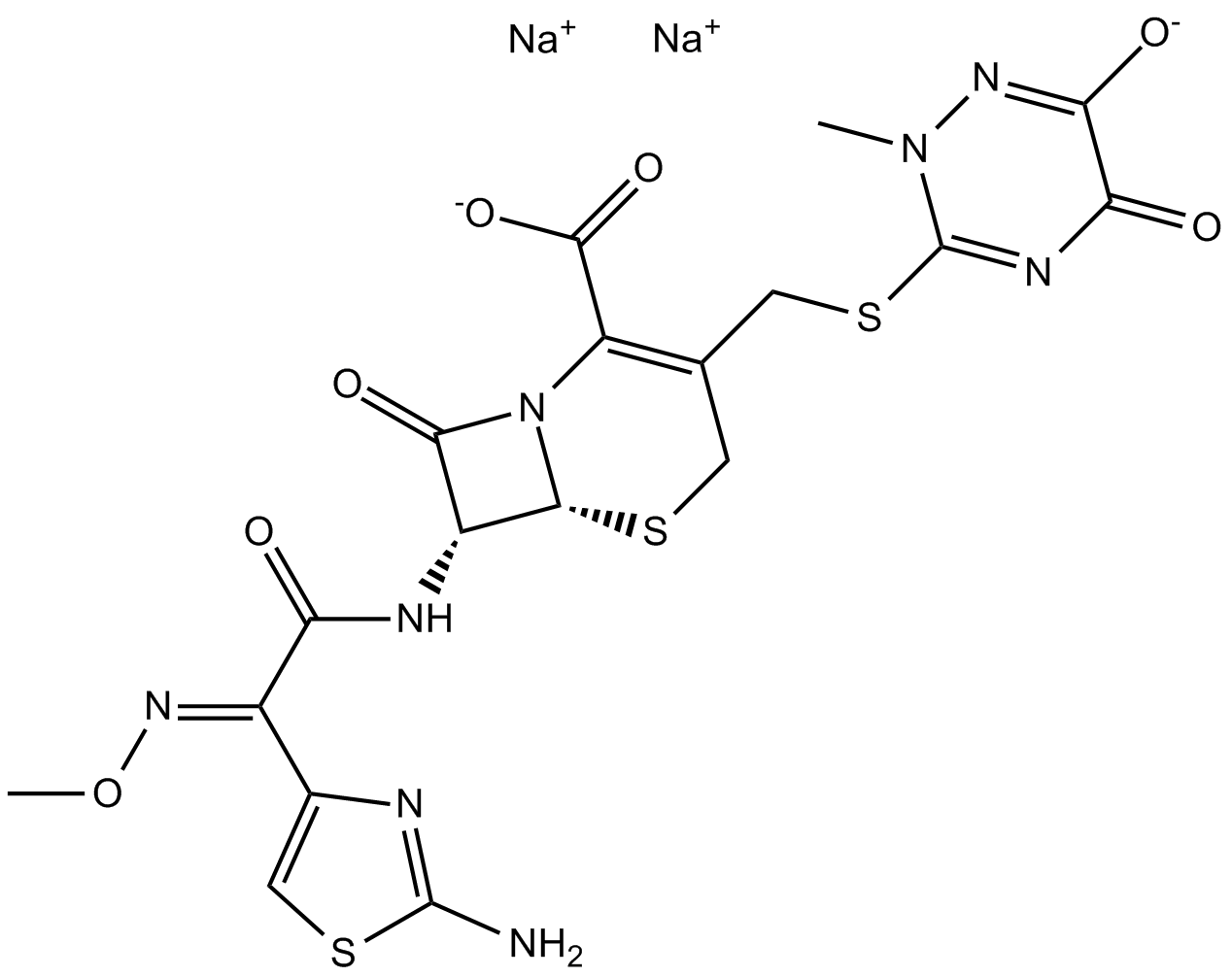
-
GC33998
Cefuracetime (SKF81367)
SKF81367 ist ein Cephalosporin-Antibiotikum.
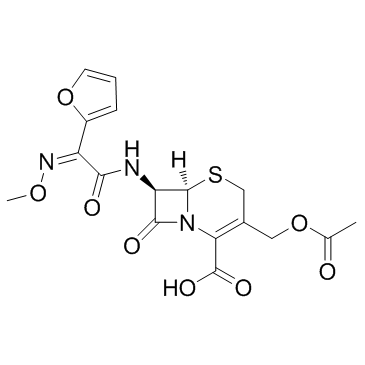
-
GC18670
Cefuroxime
Cefuroxim ist ein oral wirksames Cephalosporin-Antibiotikum der zweiten Generation mit erhÖhter StabilitÄt gegenÜber β-Lactamase.

-
GC39548
Cefuroxime axetil
Cefuroxime Axetil, ein Prodrug des Cephalosporins Cefuroxim und ein Antibiotikum mit breitem Wirkungsspektrum, hemmt mehrere grampositive und gramnegative Organismen, einschließlich derjenigen, die am hÄufigsten mit verschiedenen ambulant erworbenen Infektionen in Verbindung gebracht werden.
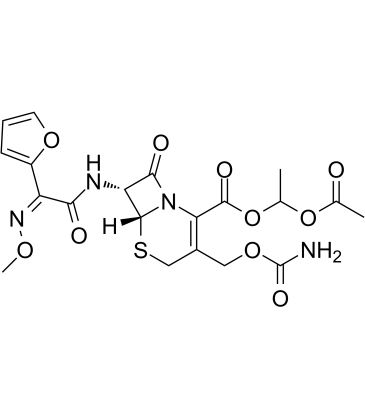
-
GC32086
Cefuroxime sodium (Cefuroxime sodium salt)
Cefuroxim-Natrium (Cefuroxim-Natriumsalz) ist ein oral wirksames Cephalosporin-Antibiotikum der zweiten Generation mit erhÖhter StabilitÄt gegenÜber ⋲-Lactamase.
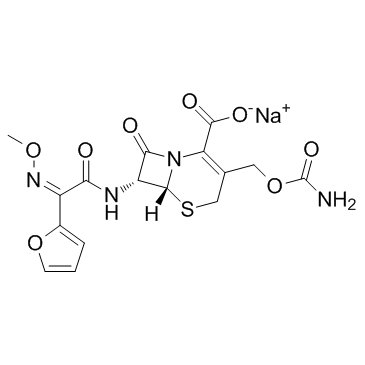
-
GC47069
Cefuroxime-d3
An internal standard for the quantification of cefuroxime
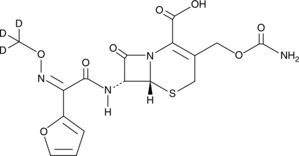
-
GC14356
Celastramycin A
inhibits the growth of bacteria and mycobacteria
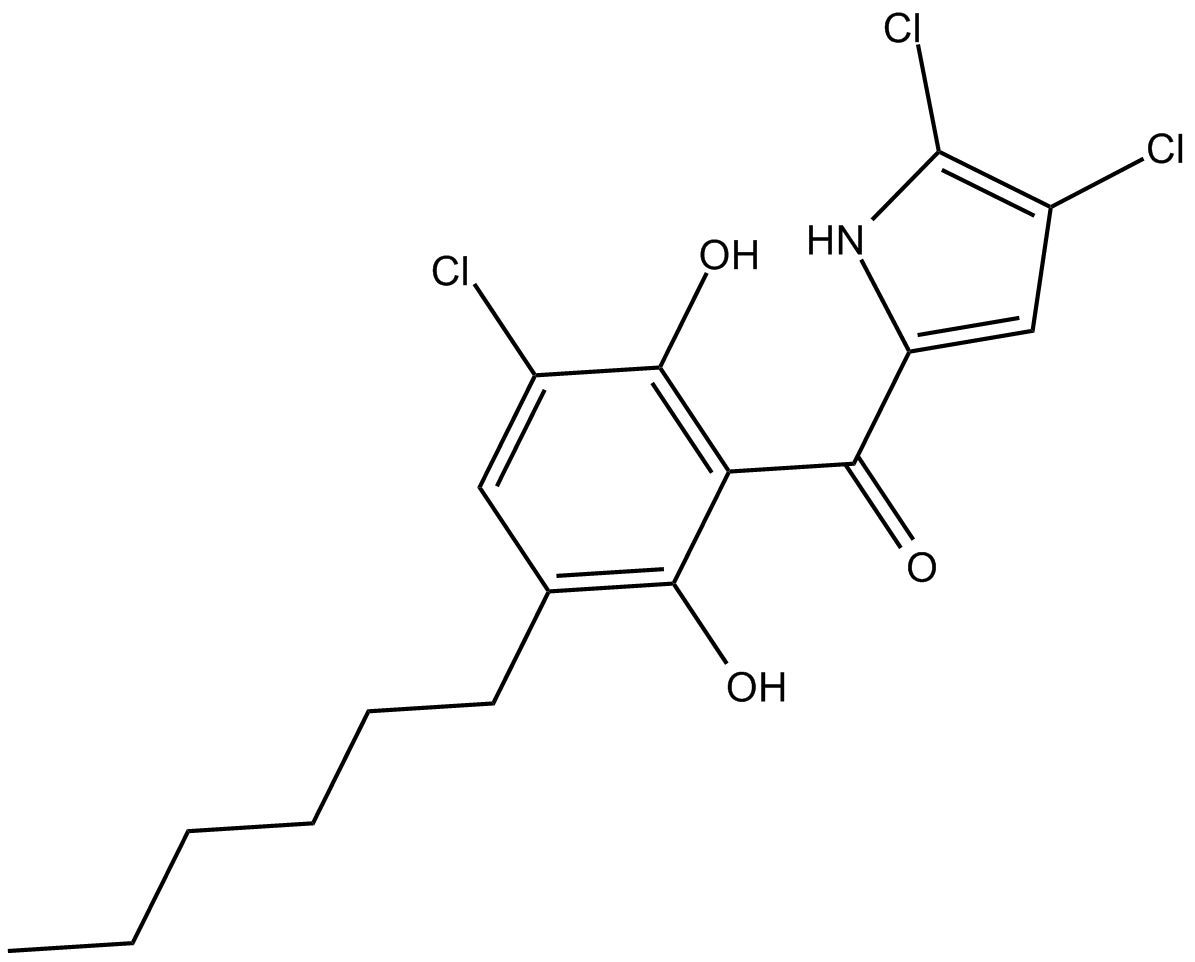
-
GC32191
Celgosivir (MBI 3253)
MBI 3253; MDL 28574; MX3253
Celgosivir (MBI 3253) (MBI 3253; MDL 28574; MX3253) ist ein ⋱-Glucosidase-I-Inhibitor; hemmt das Bovine Virus Diarrhoe Virus (BVDV) mit einem IC50-Wert von 1,27 μM im In-vitro-Assay.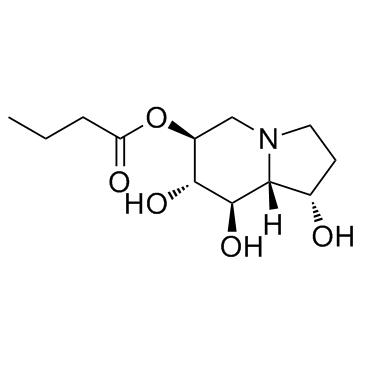
-
GC32074
Celgosivir hydrochloride (MBI 3253 (hydrochloride))
MBI 3253 hydrochloride; MDL 28574 hydrochloride; MX3253 hydrochloride
Celgosivir-Hydrochlorid (MBI 3253 (Hydrochlorid)) (MBI 3253-Hydrochlorid; MDL 28574-Hydrochlorid; MX3253-Hydrochlorid) ist ein ⋱-Glucosidase-I-Inhibitor; hemmt das Bovine Virus Diarrhoe Virus (BVDV) mit einem IC50-Wert von 1,27 μM im In-vitro-Assay.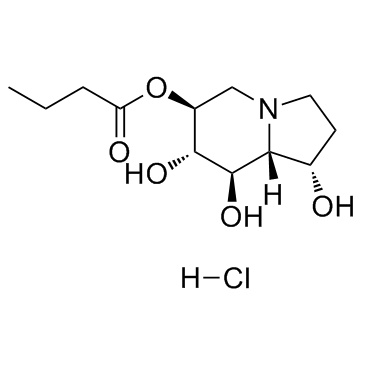
-
GC19101
Cenicriviroc
TAK-652
Cenicriviroc (CVC) ist ein oraler, dualer CCR2/CCR5-Antagonist mit nanomolarer Potenz gegen beide Rezeptoren.
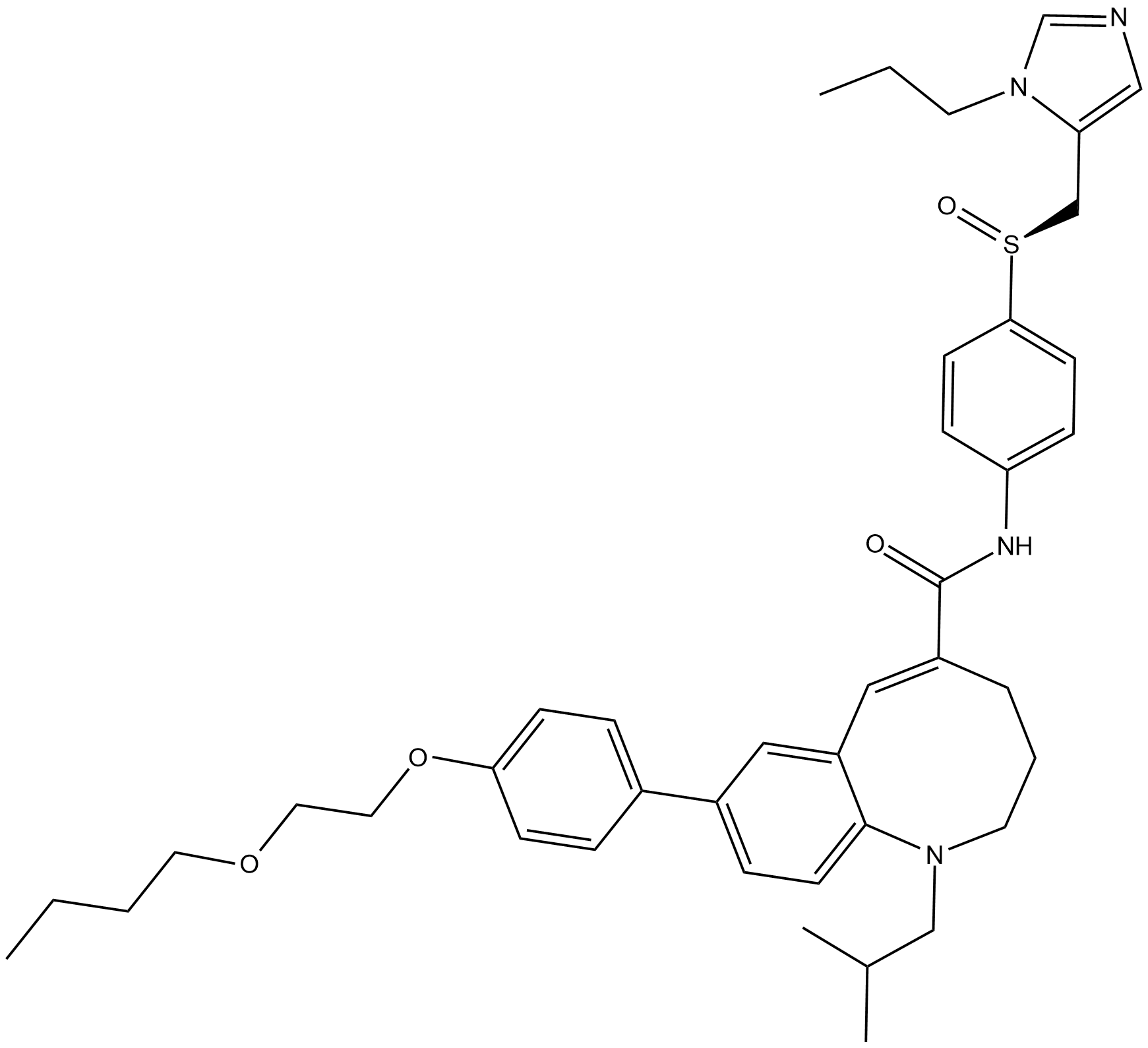
-
GC35650
Cenicriviroc Mesylate
TAK-652 Mesylate; TBR-652 Mesylate
Cenicriviroc Mesylate (TAK-652 Mesylate) ist ein dualer CCR2/CCR5-Antagonist, hemmt auch sowohl HIV-1 als auch HIV-2 und zeigt starke entzÜndungshemmende und antiinfektiÖse AktivitÄt.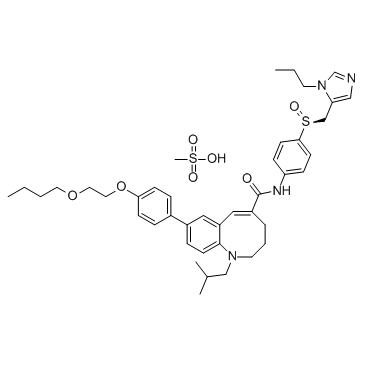
-
GC64261
Censavudine
OBP-601; BMS-986001
Censavudin (OBP-601; BMS-986001), ein Nukleosid-Analogon, ist ein Nukleosid-Reverse-Transkriptase-Inhibitor.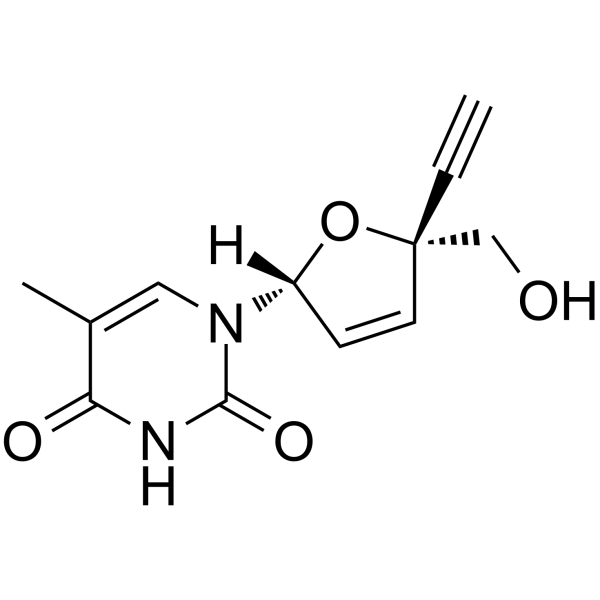
-
GC49593
Cephacetrile
Cefacetrile, 7-Cyanoacetamidocephalosporanic Acid
Cephacetrile (Cephacetrile) ist ein Breitbandantibiotikum, das bei grampositiven und gramnegativen bakteriellen Infektionen wirksam ist.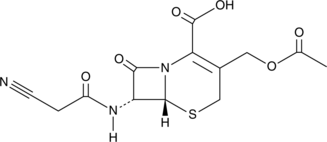
-
GC43228
Cephaeline
(-)-Cephaeline
Cephaeline ist ein phenolisches Alkaloid in indischen Ipecac-Wurzeln.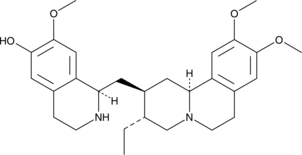
-
GC15625
Cephalexin
Cefalexin
Cephalexin (Cefalexin) ist ein potentes, oral aktives halbsynthetisches Cephalosporin-Antibiotikum mit einem breiten antibakteriellen Spektrum.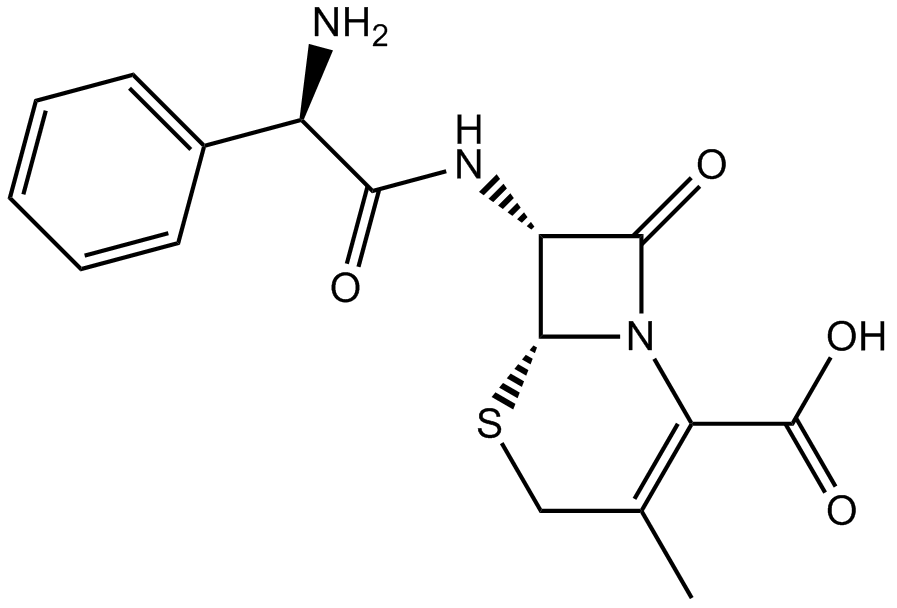
-
GC13641
Cephalexin hydrochloride
Cephalexin (Cefalexin) Hydrochlorid ist ein potentes, oral aktives neues halbsynthetisches Cephalosporin-Antibiotikum mit einem breiten antibakteriellen Spektrum.
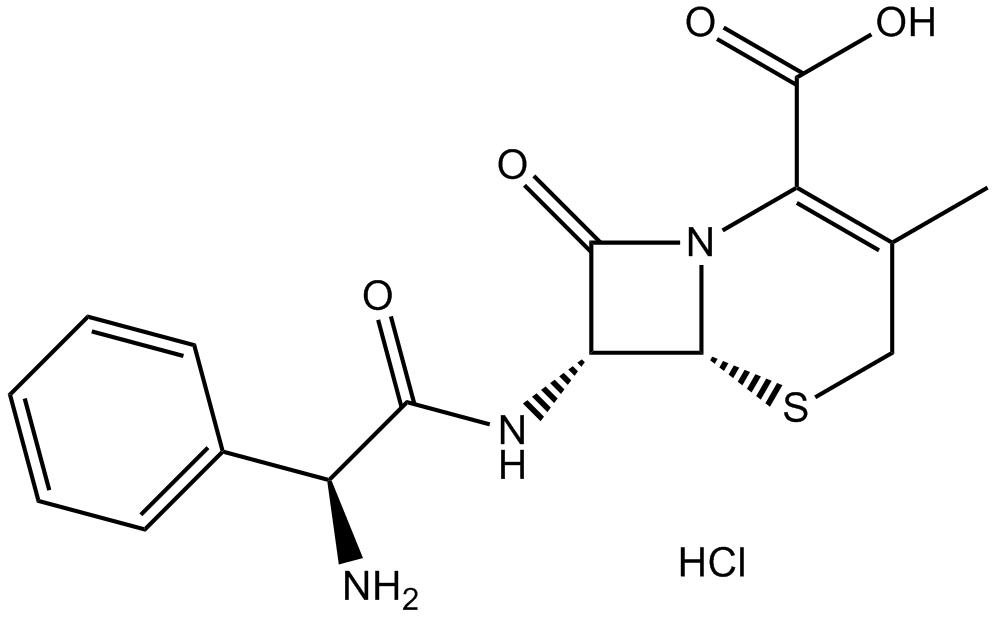
-
GC15593
Cephalexin monohydrate
Cephalexin (Cefalexin) Monohydrat ist ein potentes, oral aktives neues halbsynthetisches Cephalosporin-Antibiotikum mit einem breiten antibakteriellen Spektrum.
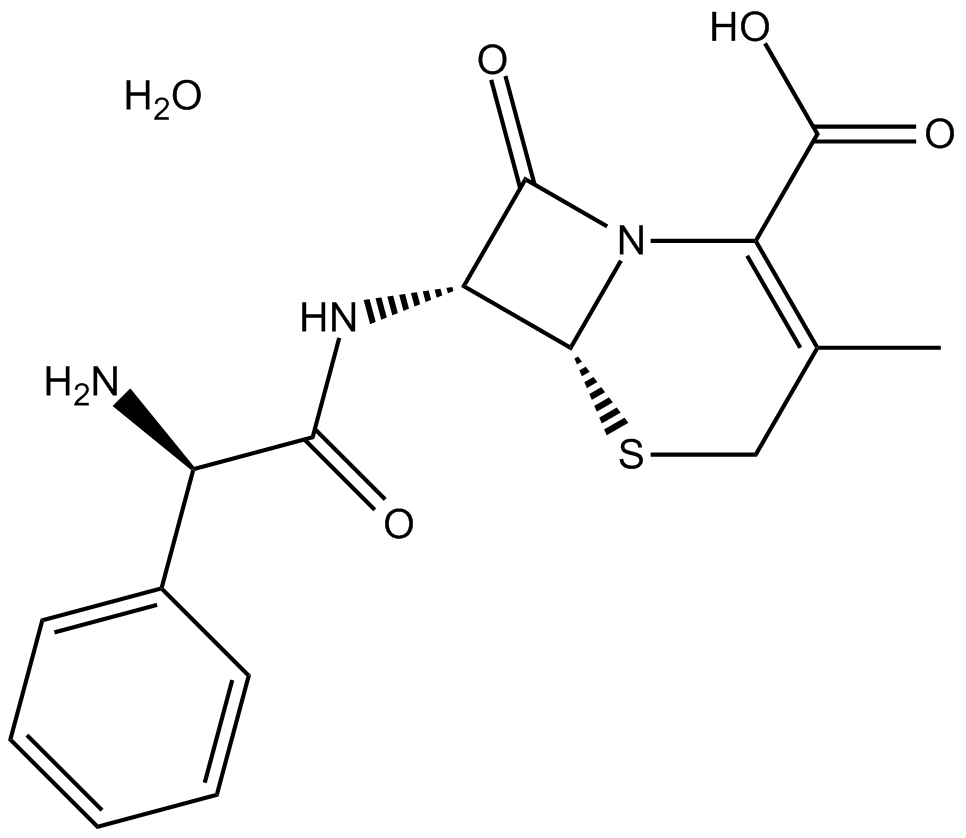
-
GC35653
Cephalotaxlen
(–)-Cephalotaxine, NSC 128487, NSC 245454, ZINC19795976
Cephalotaxlen ((-)-Cephalotaxlen) ist ein aus Cephalotaxus drupacea isolierbares Alkaloid mit antileukÄmischen und antiviralen AktivitÄten.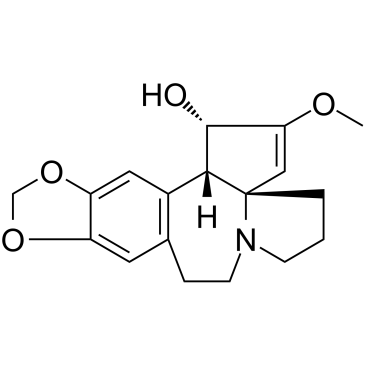
-
GC11507
Cephalothin
Cephalotin (Cephalotin) ist ein Beta-Lactam-Antibiotikum, das Klasse C β-Lactamase AmpC hemmt, mit einem Ki von 0,32 μM.
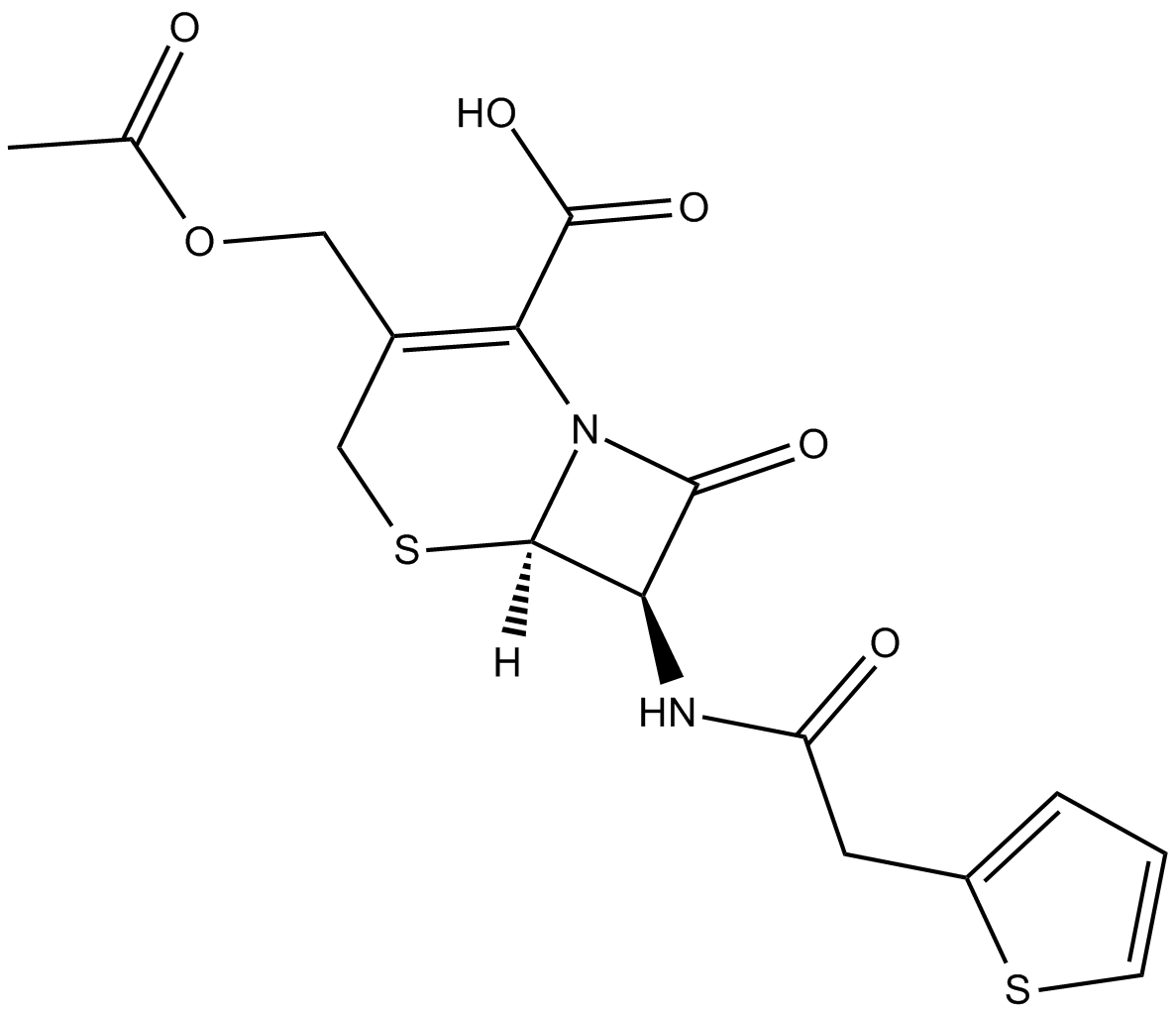
-
GC38664
Cephalothin sodium
Cephalothin-Natrium ist ein Cephem-Antibiotikum der ersten Generation mit einer breiten antibakteriellen AktivitÄt, das gegen grampositive und gramnegative Bakterien aktiv ist.
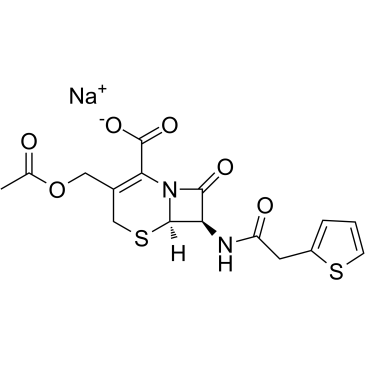
-
GC19760
Cephapirin Benzathine
Cephapirin-Benzathin ist die Benzathin-Salzform von Cephapirin.

-
GC38188
Cephapirin sodium
Cephapirin-Natrium (Cefapirin-Natrium) ist ein Ephalosporin-Antibiotikum mit antimikrobieller BreitbandaktivitÄt.
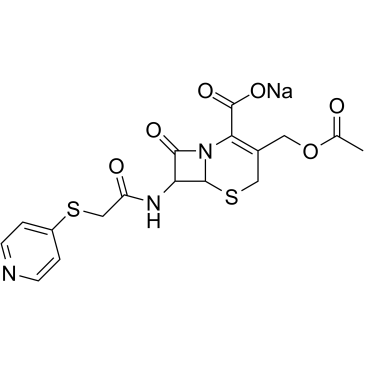
-
GN10113
Cepharanthine
O-Methylcepharanoline, NSC 623442
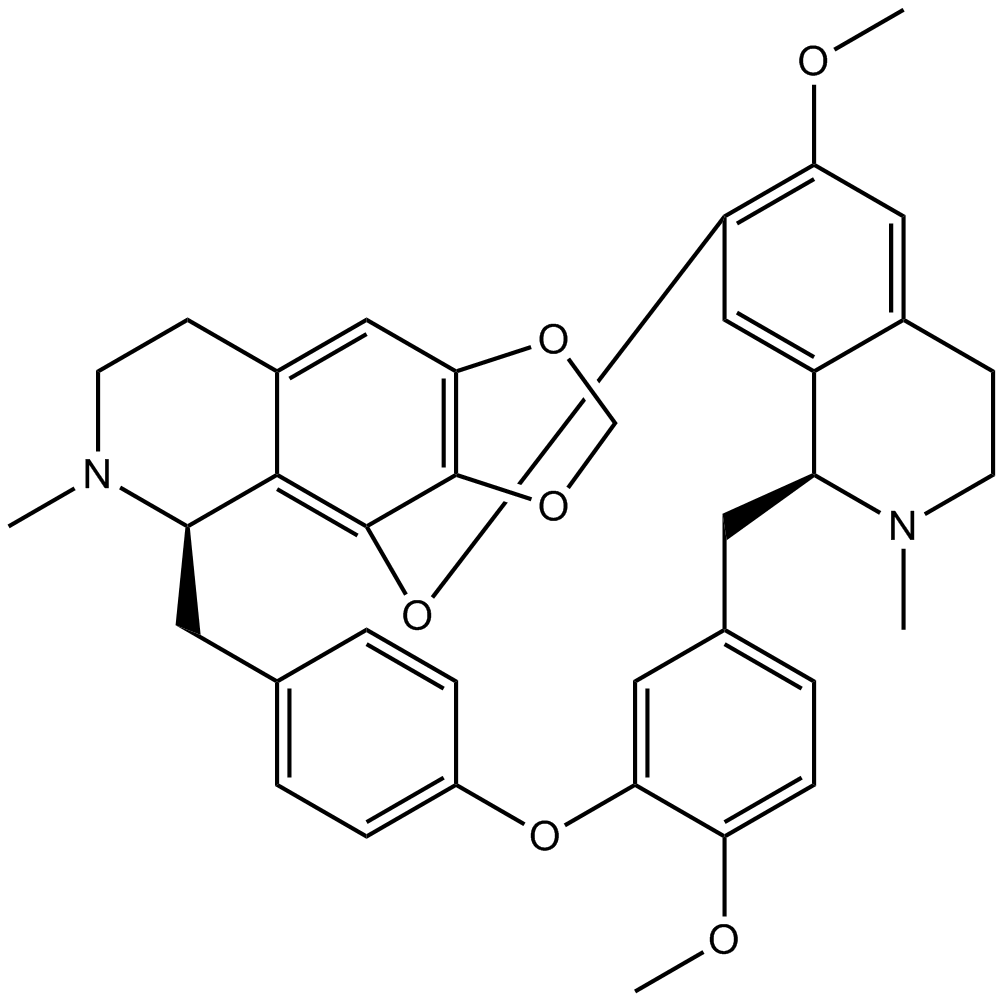
-
GC25218
Cephradine monohydrate
Cefradine is a beta-lactam, first-generation cephalosporin antibiotic with bactericidal activity.
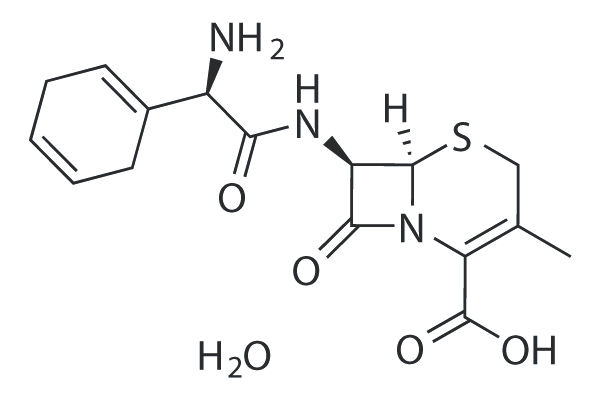
-
GC32323
Ceratotoxin A
Ceratotoxin A, ein Peptid mit 29 Resten, isoliert aus der SekretionsflÜssigkeit der NebendrÜse, mit starker antibakterieller AktivitÄt.
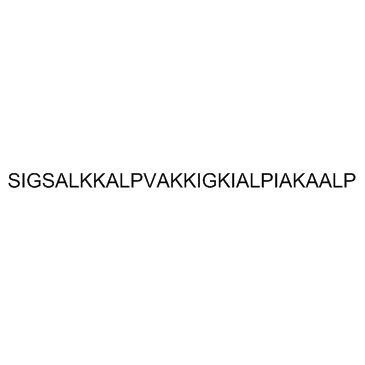
-
GC15391
Cercosporamide
(-)-Cercosporamide
A potent inhibitor of fungal Pkc1 and mammalian Mnk isoforms

-
GC65430
Cerebroside B
Cerebrosid B, eine Sphingolipidverbindung, ist ein nicht rassenspezifischer AuslÖser, der Abwehrreaktionen in Reis auslÖst.
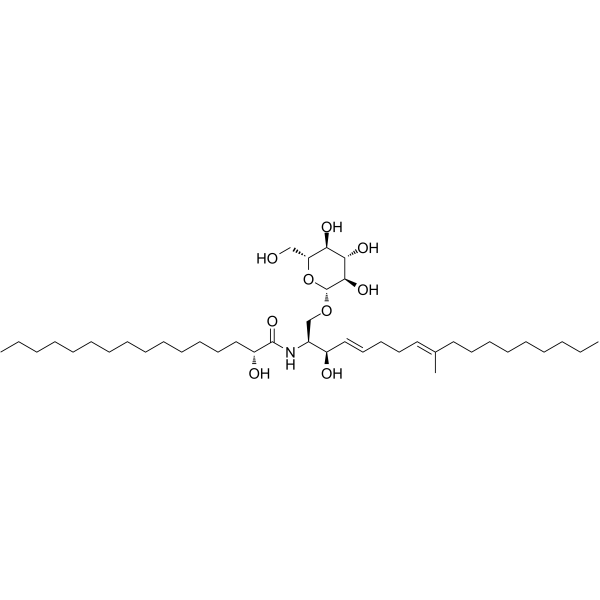
-
GC60689
Cetalkonium chloride
Cetalkoniumchlorid ist ein Ammonium-Antiseptikum, das in vielen topischen Arzneimitteln gegen Infektionen von Mund, Rachen und Augen verwendet wird.
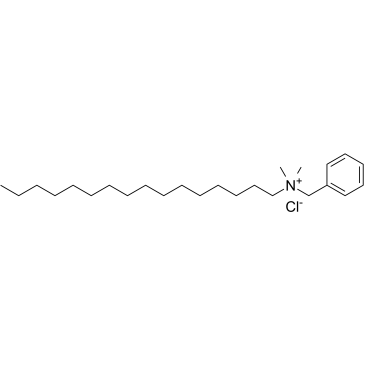
-
GC65087
Cethromycin
Cethromycin (ABT-773) ist ein Ketolid-Antibiotikum.
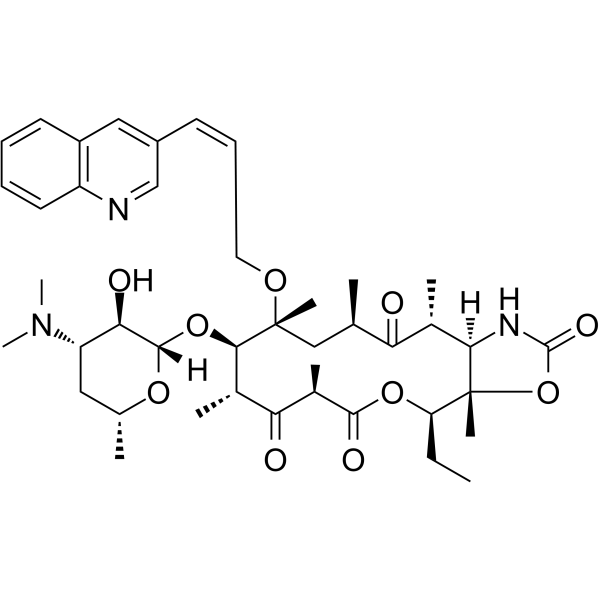
-
GC11689
Cetylpyridinium Chloride
Hexadecylpyridinium
Cetylpyridiniumchlorid, eine kationische quartÄre Ammoniumverbindung, ist ein antibakterielles Mittel mit BreitbandaktivitÄt.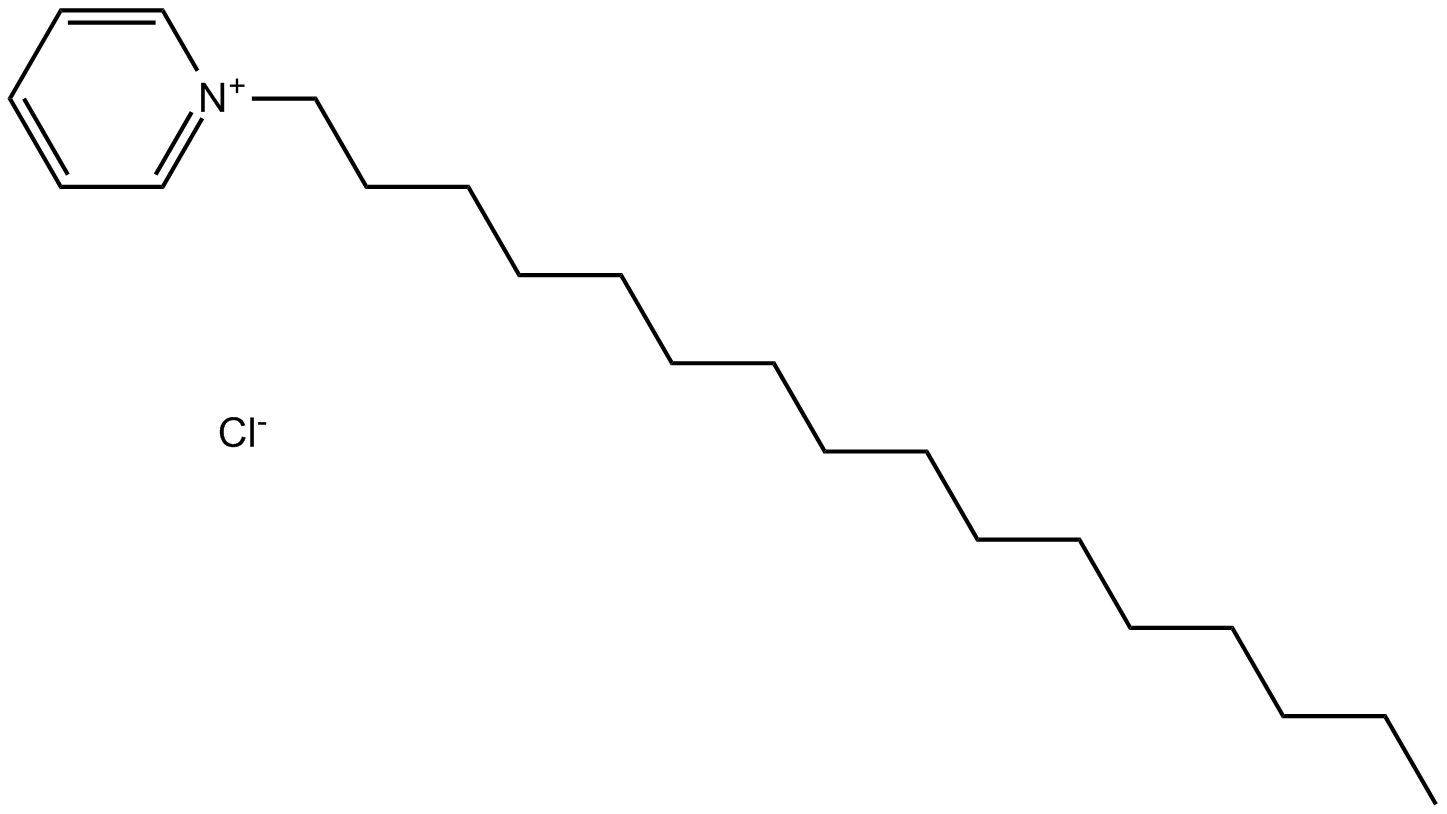
-
GC35658
Cetylpyridinium chloride monohydrate
Cetylpyridiniumchlorid-Monohydrat ist eine kationische quartÄre Ammoniumverbindung, die in einigen Arten von MundwÄssern, Zahnpasten, Rachen- und Nasensprays verwendet wird, ist ein Antiseptikum, das Bakterien und andere Mikroorganismen abtÖtet, wirksam bei der Vorbeugung von Zahnbelag und der Verringerung von Gingivitis.
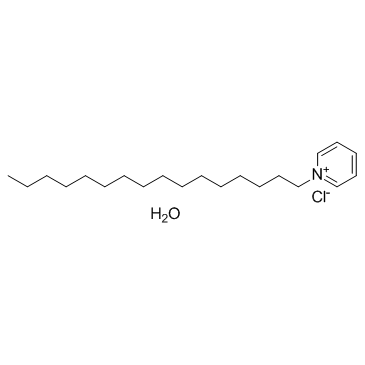
-
GC63826
Chalcone
Chalcon wird aus Glycyrrhizae inflata isoliert und zur Synthese von Chalcon-Derivaten verwendet.
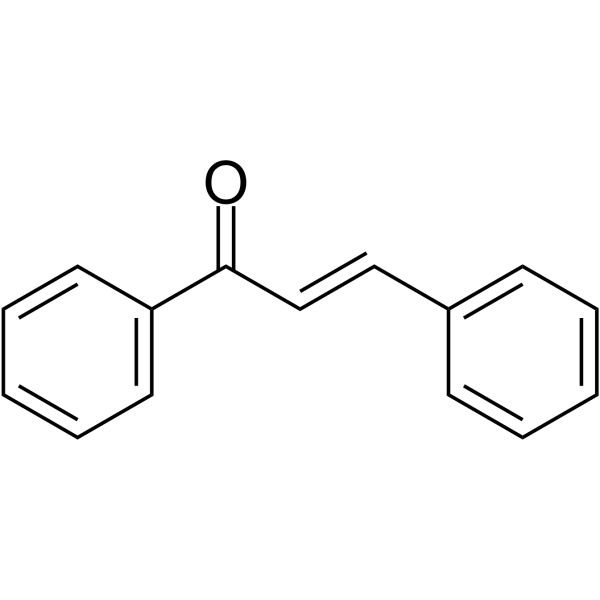
-
GC68859
Chamaechromone
Chamaechromon ist ein Flavonoid, das aus den Wurzeln von Pflanzen der Thymianfamilie isoliert wird. Chamaechromon hat eine antivirale Wirkung gegen das Hepatitis-B-Virus (HBV), hemmt die Oberflächen-Sekretion des HBV-Antigens (HBsAg) und besitzt insektizide Aktivität.
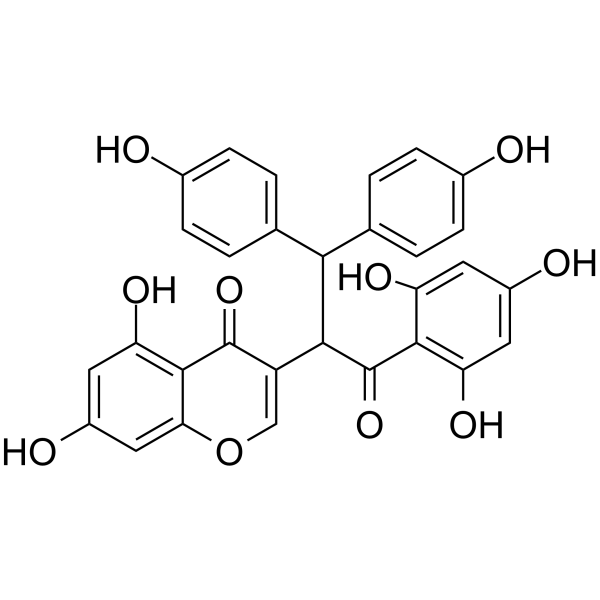
-
GC31707
Chebulagic acid
ChebulaginsÄure ist ein dualer COX-LOX-Inhibitor, der bei Angiogenese aus den FrÜchten von Terminalia chebula Retz isoliert wurde.
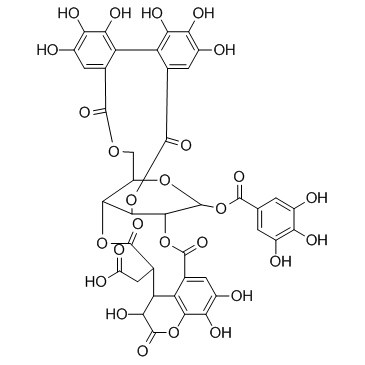
-
GC14386
CHIR-090
CHIR 090;CHIR090
An antibiotic and LpxC inhibitor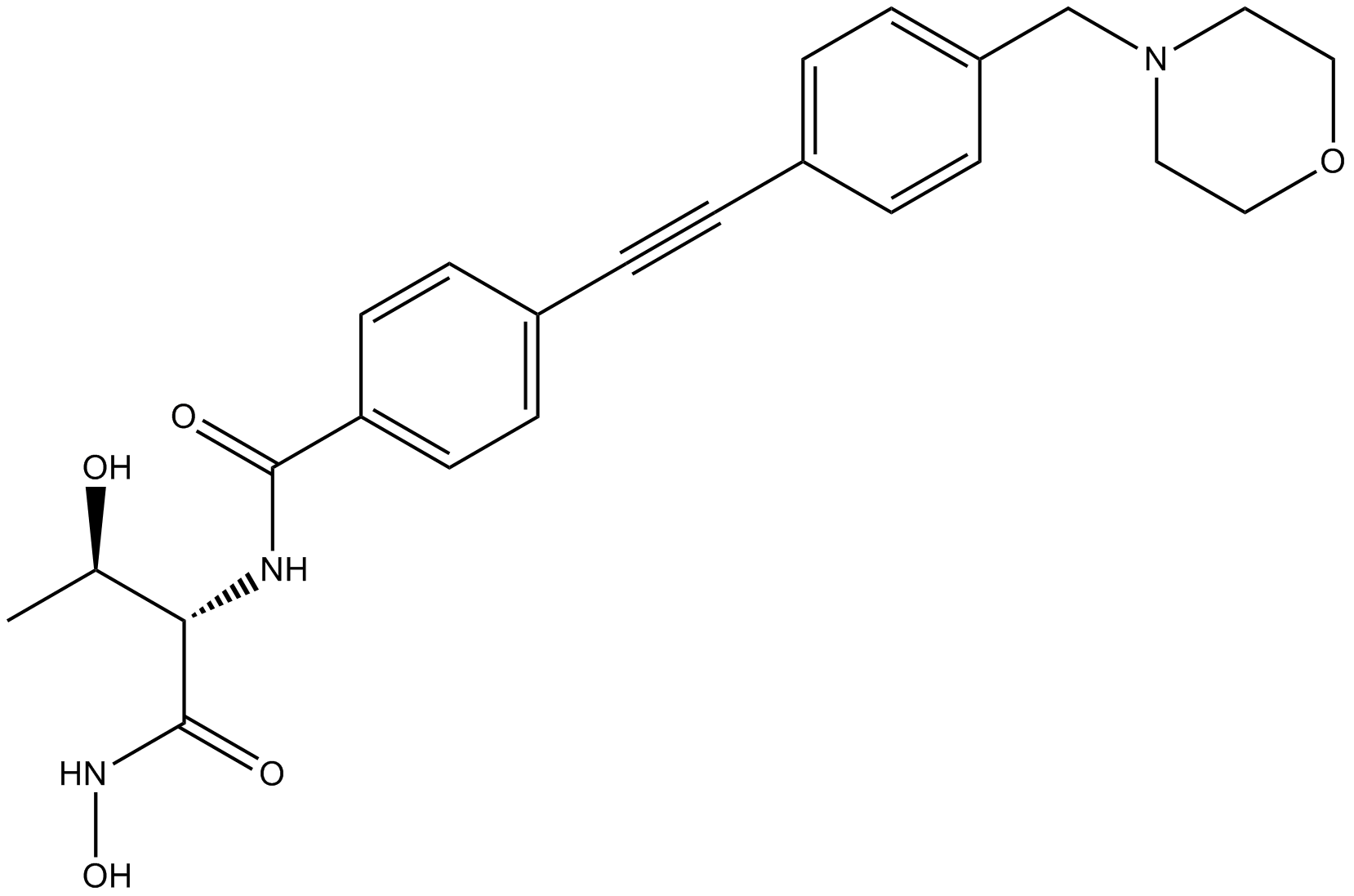
-
GC68860
Chitin synthase inhibitor 4
Chitin-Synthase-Inhibitor 4 (Verbindung 4fh) is a Chitin-Synthase (CHS) inhibitor with fungicidal effects. Chitin-Synthase-Inhibitor 4 is a potential CHS-based agricultural fungicide.
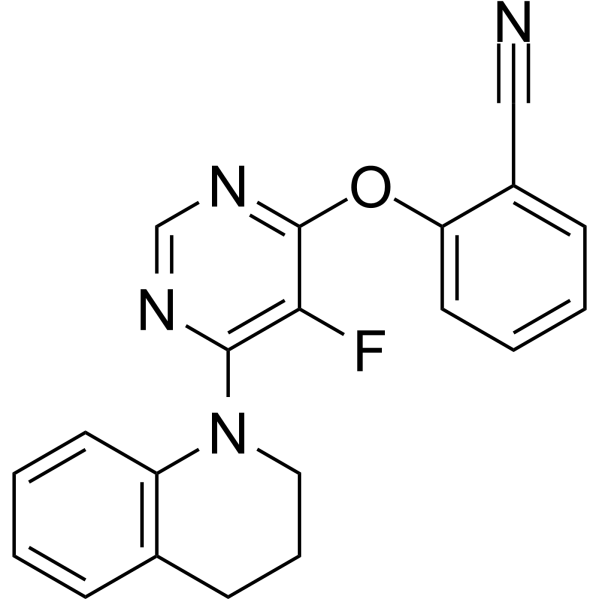
-
GC35676
Chitinase-IN-1
Chitinase-IN-1 ist ein Insektenchitinase- und N-Acetylhexosaminidase-Hemmer und -Pestizid; Der hemmende Prozentsatz der Verbindungskonzentration von 50 uM/20 uM betrÄgt 75 % bzw. 67 % fÜr Chitinase/N-Acetyl-Hexosaminidase.
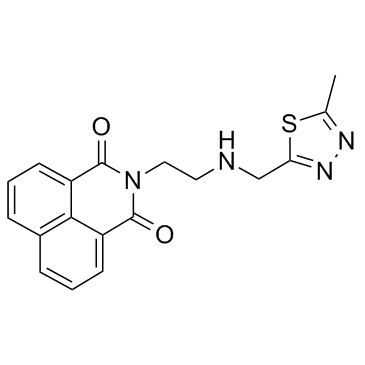
-
GC34082
Chitosan (Deacetylated chitin)
Chitosan (Deacetyliertes Chitin) (Deacetyliertes Chitin) ist ein polykationisches lineares Polysaccharid, das von Chitin abgeleitet ist.
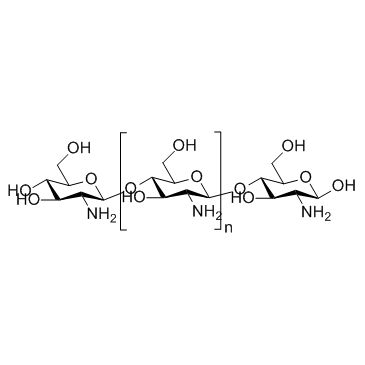
-
GC47079
Chloramine-T (hydrate)
A common reagent
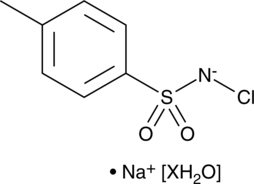
-
GC15185
Chloramphenicol
An acetylated version of chloramphenicol
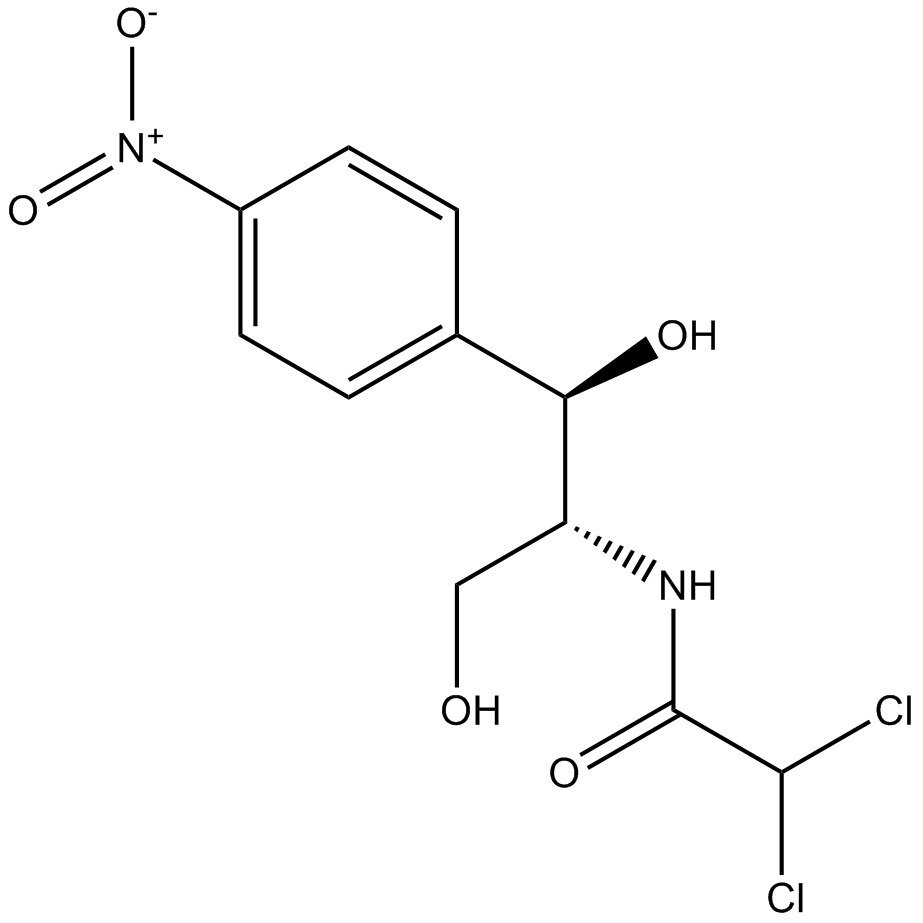
-
GC43241
Chloramphenicol Palmitate
Chloramphenicolpalmitat ist ein oral wirksames Breitbandantibiotikum und hat ein breites Wirkungsspektrum gegen grampositive und gramnegative Bakterien.

-
GC43242
Chloramphenicol Succinate
Chloramphenicol succinate is a water-soluble prodrug form of the antibiotic chloramphenicol.
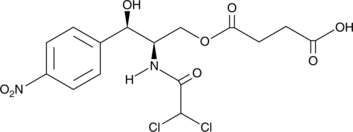
-
GC39661
Chloramphenicol succinate sodium
Chloramphenicolsuccinat-Natrium ist ein Prodrug von Chloramphenicol mit HÄmatotoxizitÄt.
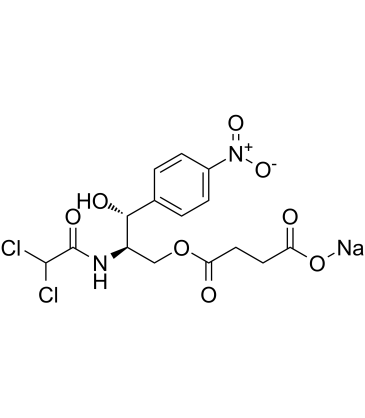
-
GC32394
Chlordantoin (Clodantoin)
Chlordantoin (Clodantoin) ist ein Antimykotikum und hat das Potenzial zur Behandlung von vaginaler Candidiasis.
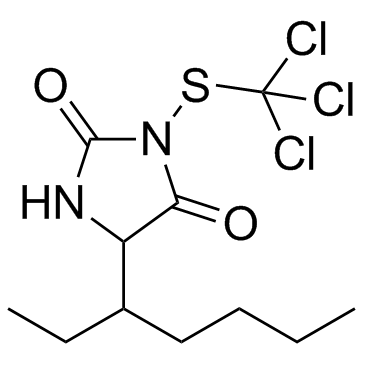
-
GC35680
Chlorhexidine
Chlorhexidin ist ein antibakterielles Mittel, das als Antiseptikum und fÜr andere Anwendungen verwendet wird.
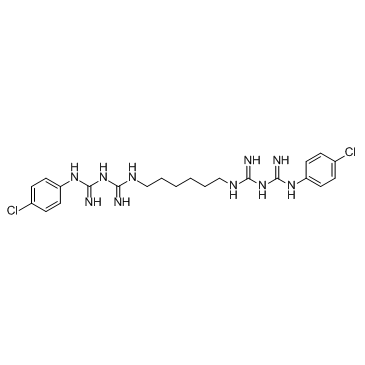
-
GC43243
Chlorhexidine (acetate hydrate)
CHX
Chlorhexidin (Acetathydrat) ist ein antibakterielles Mittel, das als Antiseptikum und für andere Anwendungen verwendet wird.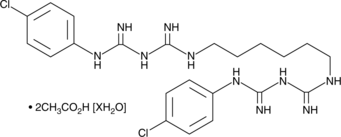
-
GC60699
Chlorhexidine diacetate
Chlorhexidindiacetat ist ein Biguanid-Desinfektionsmittel mit schneller bakterizider AktivitÄt gegen grampositive und gramnegative Organismen.
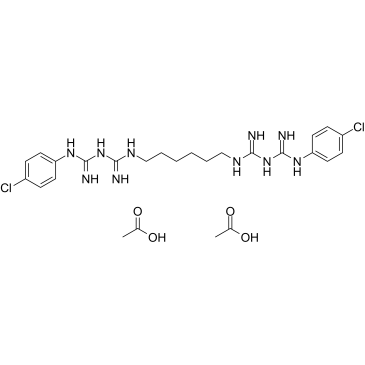
-
GC16201
Chlorhexidine digluconate
Chlorhexidindigluconat ist ein Antiseptikum, das gegen eine Vielzahl von gramnegativen und grampositiven Organismen wirksam ist.
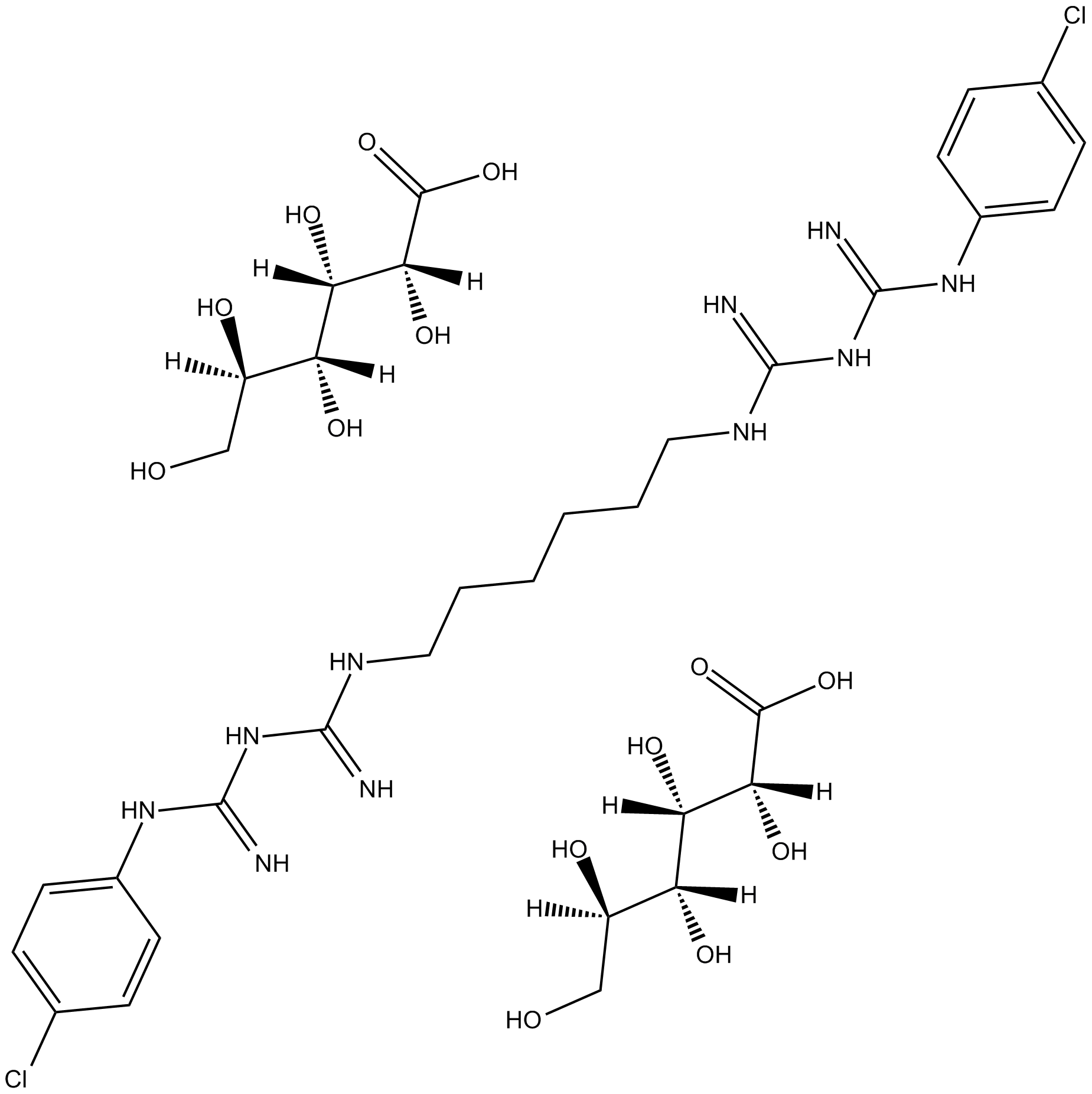
-
GC15204
Chlorhexidine HCl
CHX
Chlorhexidin HCl ist ein antibakterielles Mittel, das als Antiseptikum und fÜr andere Anwendungen verwendet wird.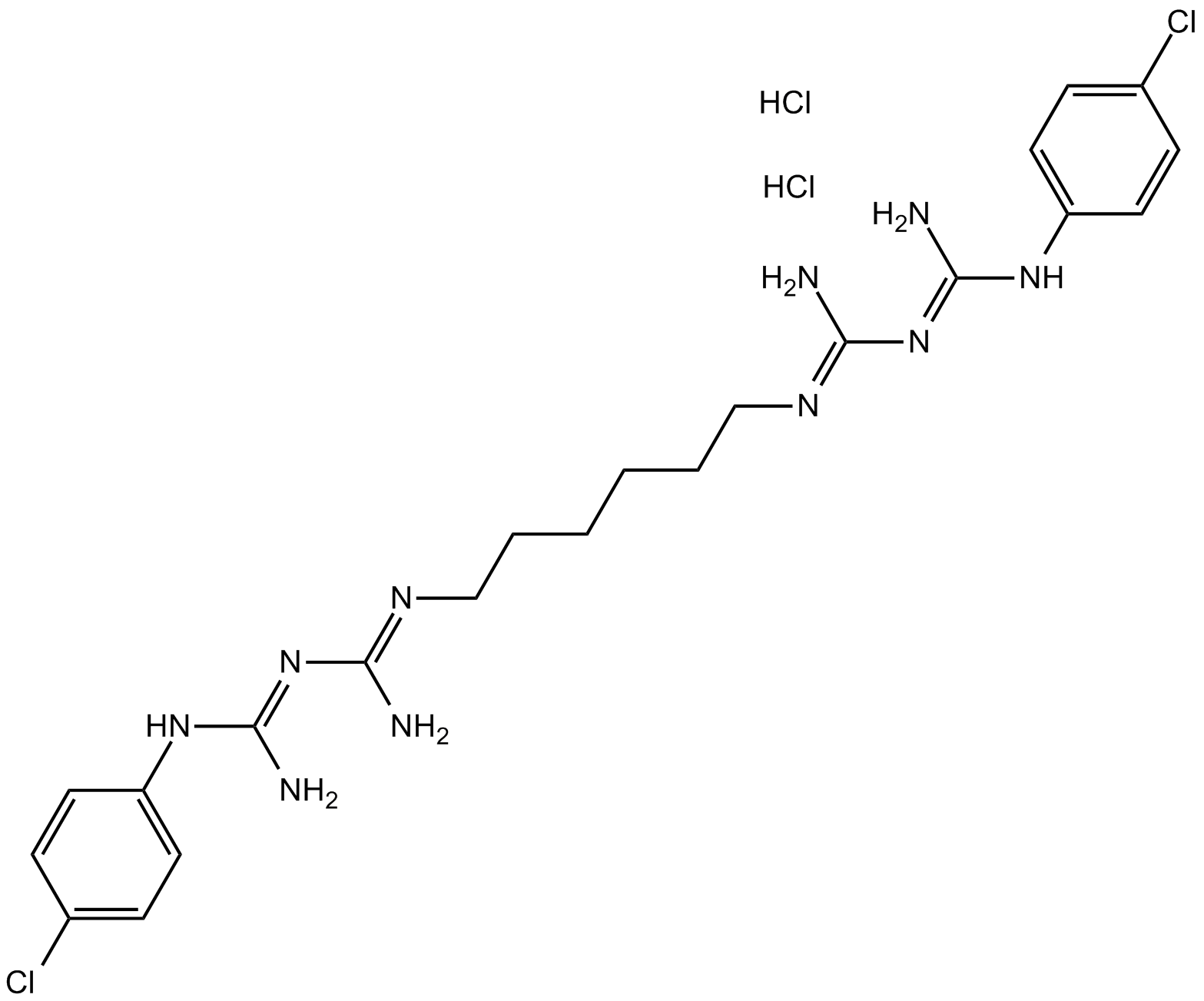
-
GC39601
Chlormidazole hydrochloride
Clomidazole hydrochloride
Chlormidazolhydrochlorid ist ein Antimykotikum und hat eine hemmende Wirkung gegen viele Pilze und einige grampositive Kokken.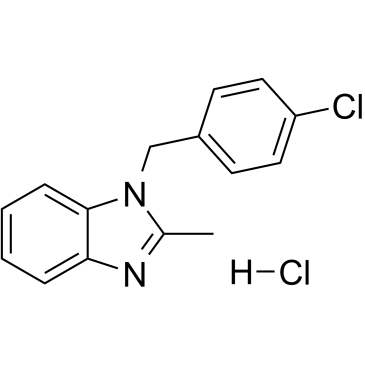
-
GC39358
Chlorobutanol
Chlorbutanol ist ein pharmazeutisches Konservierungsmittel.

-
GC62358
Chlorobutanol hemihydrate
Chlorbutanol-Hemihydrat ist ein pharmazeutisches Konservierungsmittel.
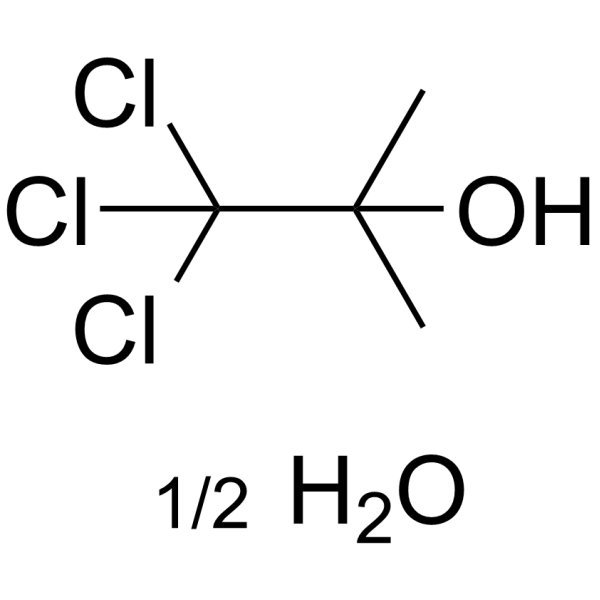
-
GC19549
Chloroquine
CHLORO QUINE PHOSPHATE; 4-(7-chloro-4-quinolylamino)pentyldiethylamine; (4S)-N~4~-(7-chloroquinolin-4-yl)-N~1~,N~1~-diethylpentane-1,4-diamine
Chloroquin ist ein Antimalariamittel und entzÜndungshemmendes Mittel, das hÄufig zur Behandlung von Malaria und rheumatoider Arthritis eingesetzt wird.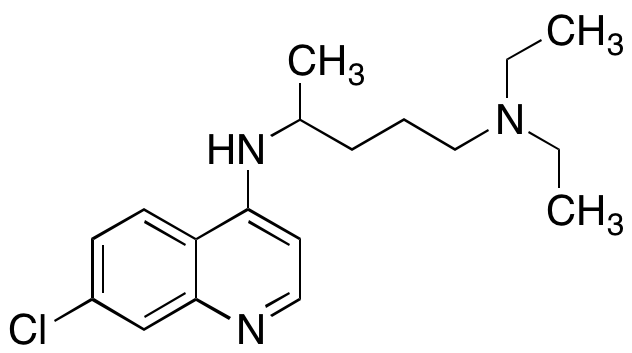
-
GC60700
Chloroquine D5
Chloroquin D5 ist mit Deuterium markiertes Chloroquin.
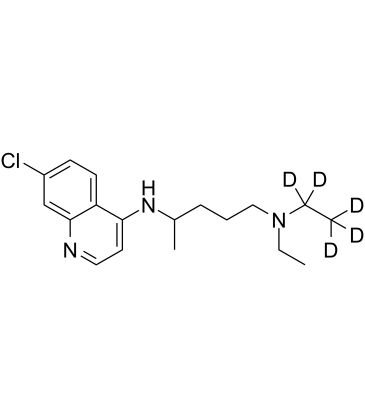
-
GC10295
Chloroquine diphosphate
DL-Chloroquine, NSC 14050
Chloroquinphosphat ist ein Antimalariamittel und entzündungshemmendes Mittel, das weit verbreitet zur Behandlung von Malaria und rheumatoider Arthritis eingesetzt wird.
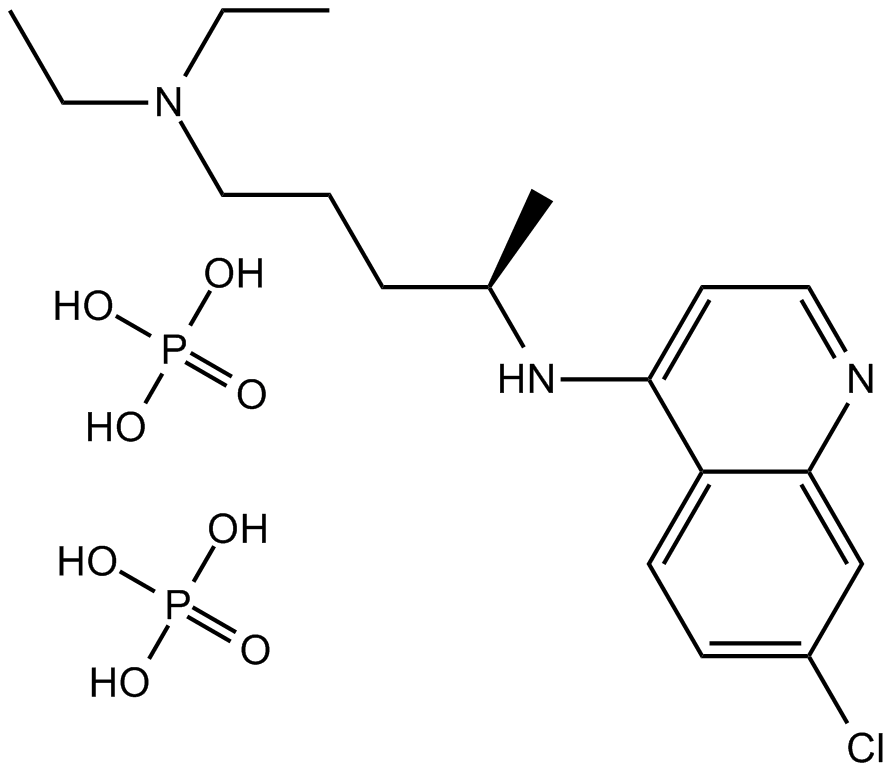
-
GC45885
Chloroquine-d5 (phosphate)
DL-Chloroquine-d5
An internal standard for the quantification of chloroquine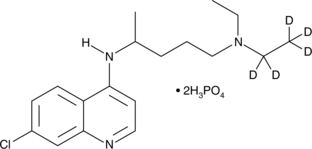
-
GC60107
Chloroquinoxaline sulfonamide
Chloroquinoxalinsulfonamid (Chloroquinoxalin), ein strukturelles Analogon von Sulfaquinoxalin, ist ein Topoisomerase-II-alpha/beta-Gift.
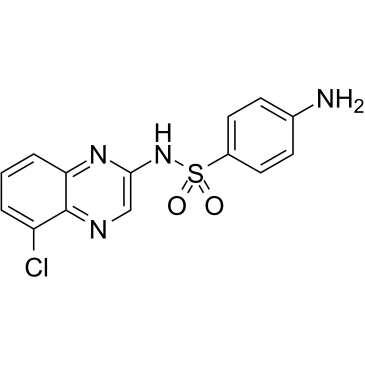
-
GC47082
Chlorothalonil
2,4,5,6-Tetrachloroisophthalonitrile
Chlorothalonil ist ein Breitbandfungizid und schÜtzt Pflanzen wirksam vor Pilzkrankheiten, die hauptsÄchlich durch Phytophthora infestans und Alternaria solani verursacht werden.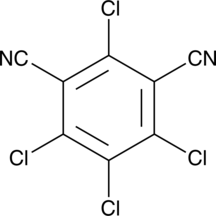
-
GC16628
Chlorothricin
Antibiotic K 818A
Chlorothricin, ein Antibiotikum, ist ein Inhibitor der Malatdehydrogenase des Schweineherzens.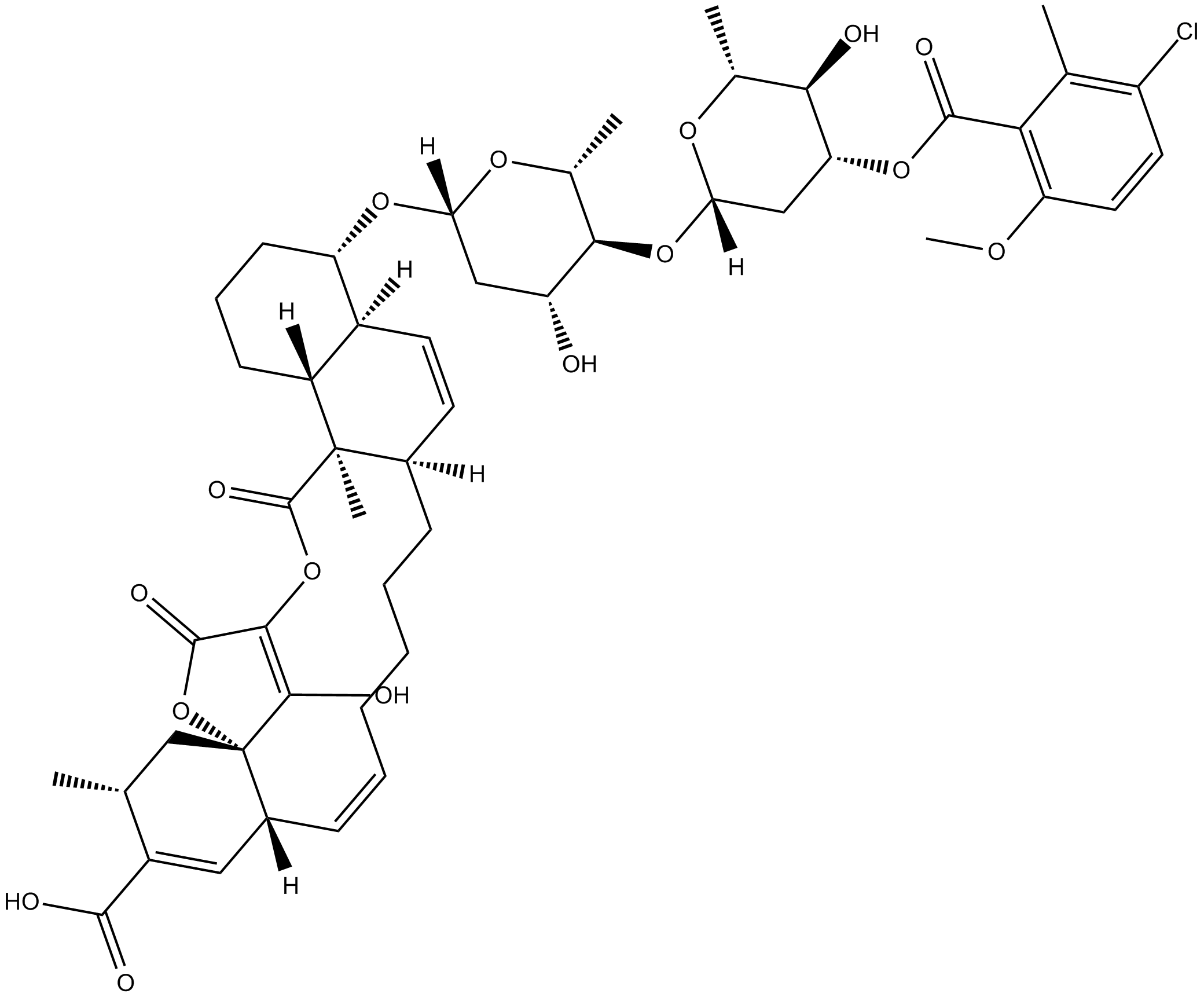
-
GC17165
Chloroxine
Chloroxin ist eines der wichtigen 8-Hydroxychinolin-Derivate.
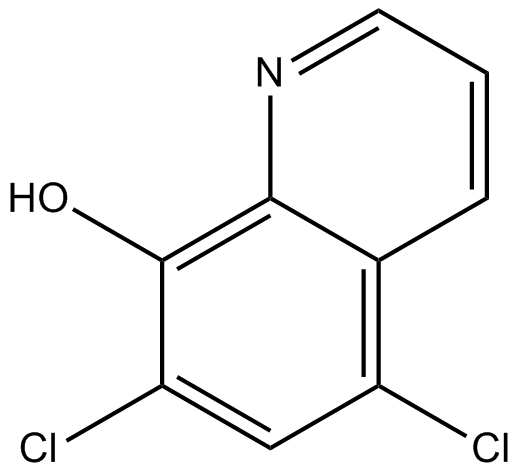
-
GC33937
Chloroxylenol (4-Chloro-3,5-dimethylphenol)
Chloroxylenol (4-Chlor-3,5-dimethylphenol) ist eine antimikrobielle chemische Verbindung mit breitem Wirkungsspektrum, die zur BekÄmpfung von Bakterien, Algen, Pilzen und Viren eingesetzt wird.
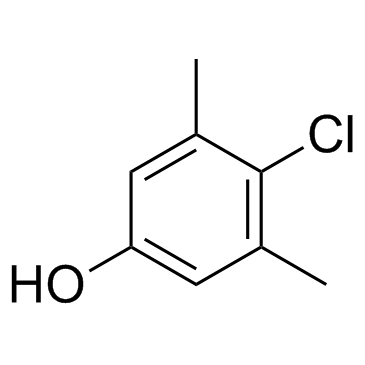
-
GC60701
Chlorphenesin
(±)-p-Chlorphenesin, NSC 6401
Chlorphenesin ist ein reversibles Antigen-assoziiertes Immunsuppressivum.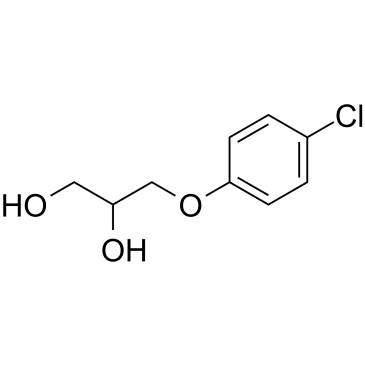
-
GC15312
Chlorprothixene
Chlorprothixen ist ein Antagonist der Dopamin- und Histaminrezeptoren mit einem Kis von 18 nM, 2,96 nM, 4,56 nM, 9 nM und 3,75 nM fÜr die hD1-, hD2-, hD3-, hD5- bzw. hH1-Rezeptoren.
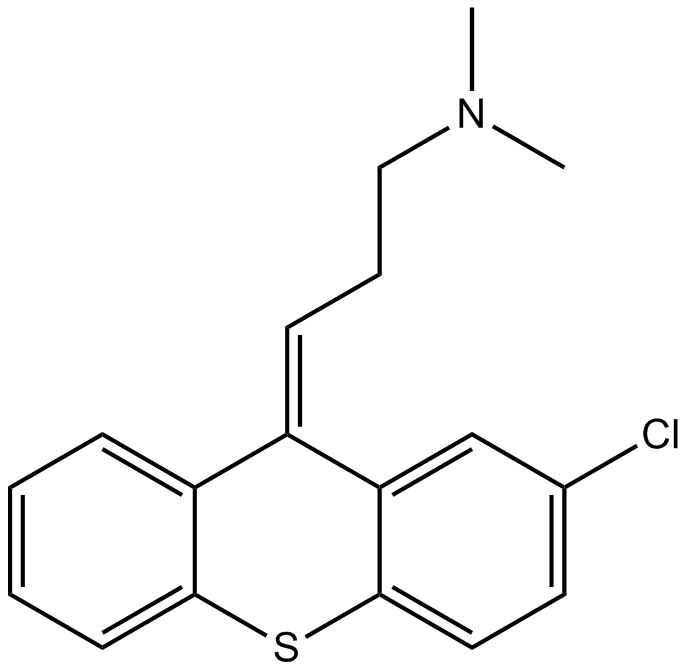
-
GC17540
Chlorquinaldol
Chlorquinaldol (Chloquinan) ist ein Mono-Hydroxychinolin, ist ein Antimykotikum und antibakterielles Mittel, das zur topischen Behandlung von Hauterkrankungen und Vaginalinfektionen verwendet wird.
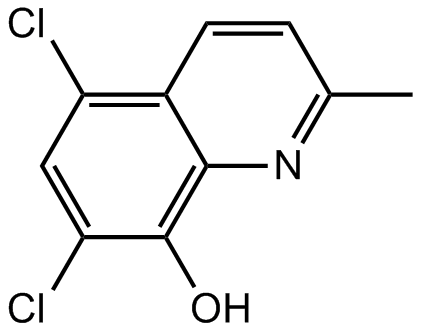
-
GC40996
Chlortetracycline
7-Chlortetracycline
Chlortetracyclin (7-Chlorotetracyclin) ist ein spezifisches und wirksames Calcium-Ionophor-Antibiotikum, das die Bindung von Aminoacyl-tRNA an Ribosomen hemmt.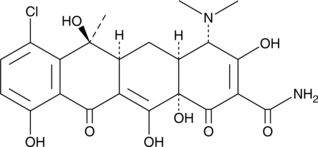
-
GC60702
Chlortetracycline hydrochloride
Chlortetracyclin-Hydrochlorid (7-Chlorotetracyclin-Hydrochlorid) ist ein spezifisches und wirksames Calciumionophor-Antibiotikum, das die Bindung von Aminoacyl-tRNA an Ribosomen hemmt.
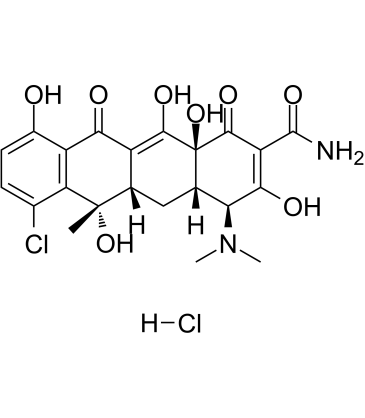
-
GC43259
Cholesteryl Homo-γ-Linolenate
20:3 (8Z,11Z,14Z) CE, 20:3 n-6 CE, 20:3 (8Z,11Z,14Z) Cholesterol Ester
Cholesteryl homo-γ-linolenate is a cholesterol ester.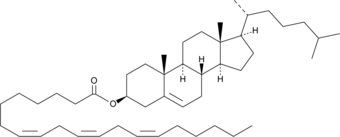
-
GC46119
Cholic Acid anilide
A synthetic bile acid
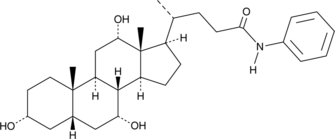
-
GC18344
Chrysomycin B
Albacarcin M, Virenomycin M
Chrysomycin B ist ein aus einem Streptomyces-Stamm isoliertes Antibiotikum. Chrysomycin B verursacht DNA-SchÄden in der Zelllinie des menschlichen Lungenadenokarzinoms A549 und hemmt die Topoisomerase II. Chrysomycin B unterdrÜckt das Wachstum von transplantierbaren Tumoren bei MÄusen.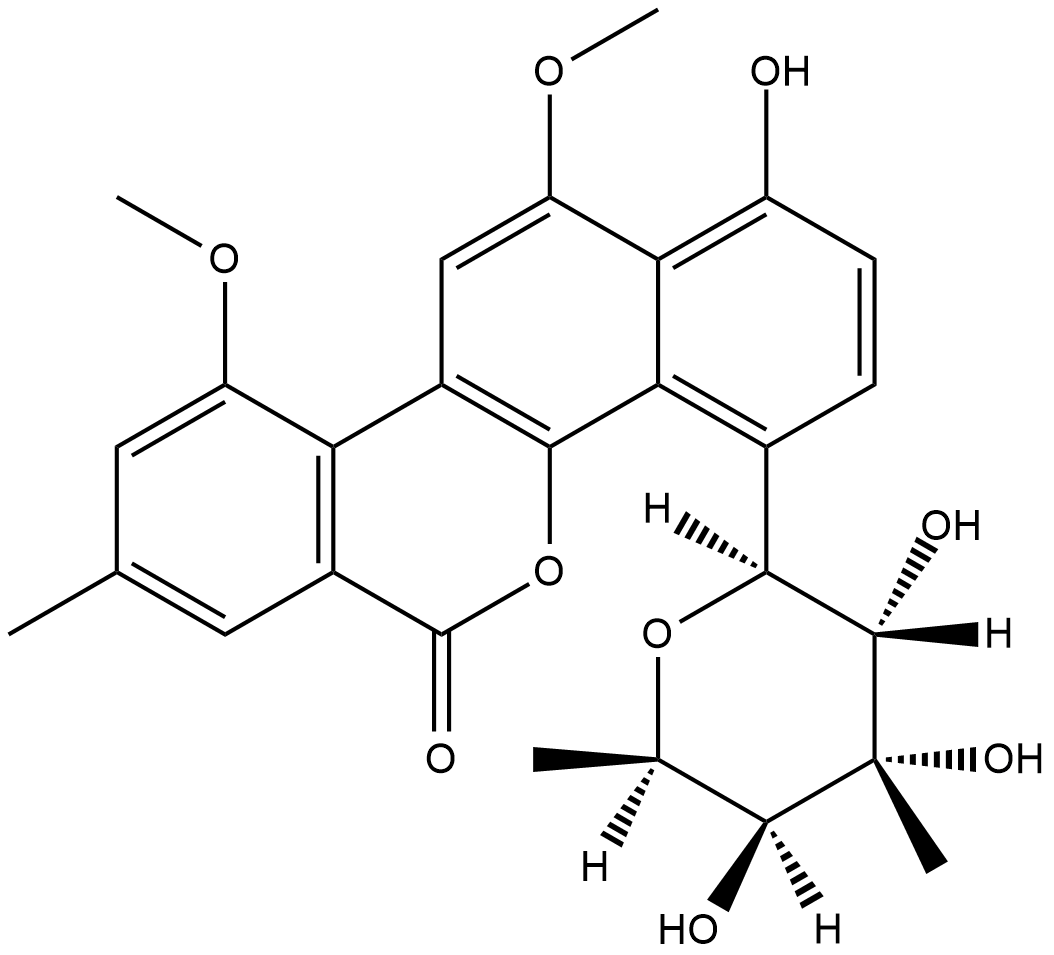
-
GC64289
Cichoriin
Cichoriin ist ein Wirkstoff gegen SARS-CoV-2 und kÖnnte ein potenzieller Kandidat fÜr die Behandlung von schwerem COVID-19 sein.
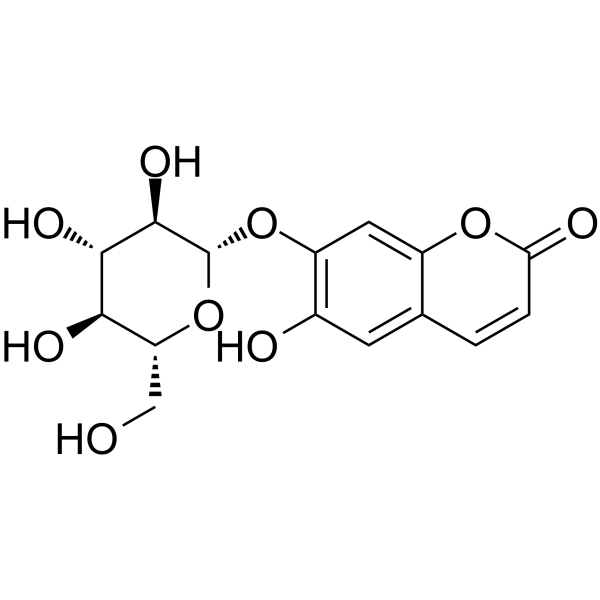
-
GC10132
Ciclopirox
HOE 296b
Ciclopirox (HOE296b) ist ein synthetisches Antimykotikum, das fÜr die Erforschung oberflÄchlicher Mykosen verwendet werden kann.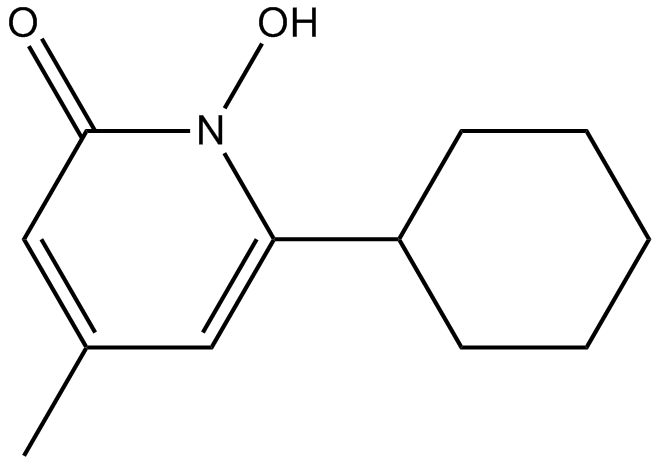
-
GC11120
Ciclopirox ethanolamine
Ciclopirox-Ethanolamin (Ciclopirox-Ethanolamin) ist ein synthetisches Antimykotikum, das fÜr die oberflÄchliche Mykosenforschung verwendet werden kann.
